| Lou Reed: "New York" (Sire, Jan. 1989) |
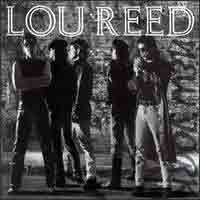 Nach
einigen eher ruhigen Jahren ein grandioses Comeback! Zwar sind es wiedermal
die sehr guten Songs aus der Feder von Onkel Lou, die überzeugen,
trotzdem steht eher die Band mit ihren Sound im Mittelpunkt: 2 Gitarren
(Reed und Mike Rathke), ein Bass (Rob Wasserman am elektrischen
Kontrabass) und ein Schlagzeug (Fred Maher).
"YOU CAN'T BEAT 2 GUITARS, BASS, DRUM." heißt
es so schön in den Linernotes. Dazu kommen sporadische Gäste:
Sänger Dion und - ein wunderbare Sache - die alte Velvet
Underground-Trommlerin Moe Tucker! Nach
einigen eher ruhigen Jahren ein grandioses Comeback! Zwar sind es wiedermal
die sehr guten Songs aus der Feder von Onkel Lou, die überzeugen,
trotzdem steht eher die Band mit ihren Sound im Mittelpunkt: 2 Gitarren
(Reed und Mike Rathke), ein Bass (Rob Wasserman am elektrischen
Kontrabass) und ein Schlagzeug (Fred Maher).
"YOU CAN'T BEAT 2 GUITARS, BASS, DRUM." heißt
es so schön in den Linernotes. Dazu kommen sporadische Gäste:
Sänger Dion und - ein wunderbare Sache - die alte Velvet
Underground-Trommlerin Moe Tucker!

 Mehr ...
Mehr ...
|
Einige Zeit her, daß der Meister anständiges von sich hören
ließ: Seine letzte erfolgreiche Platte Transformer erschien 1973,
schlappe 17 Jahre vor New York. Trotzdem nimmt er den Mund ziemlich voll,
schreibt uns sogar vor, wie wir sein Werk zu hören haben: Nämlich
alle 14 Lieder am Stück, in einer Sitzung, als wär's ein Buch
oder ein Film. Darf er das? Er darf, denn er ist Lou Reed, und seine Platte
rockt.
Das Album trägt nicht umsonst den Namen einer der aufregendsten Städte
der Welt: Wie New York selbst strotzt es vor Energie, vor Kraft -- und
vor Drogen, Haß und Gewalt. "You can't beat 2 Guitars, Drum,
Bass" gibt er uns noch mit auf den 58-Minuten-langen Weg durch seine
Musik, und auch damit behält er recht -- jedenfalls sind sie dann
unschlagbar, wenn sie Lou Reeds lyrischen Sprechgesang begleiten sollen,
seine Visionen, seinen Ärger, seine Realität. Selten war eine
CD brutaler, direkter -- aber auch selten ehrlicher, aufregender, klarer,
tiefer. New York erzählt von Straßenkindern, verkommenen politischen
Machthabern und Vietnam-Veteranen. New York erzählt von der Hoffnung,
dem Wunder der Geburt, wilden Rocker-Fantasien. New Yorkist arrogant und
mächtig. New York ist nicht einfach. Aber was ist schon einfach.
(Michael Ebert, amazon.de)
|
|
|
So unverfälscht rockig klang Lou Reed seit Velvet Underground nicht
mehr. Aber vom Thema New York offensichtlich inspiriert, bekommt man Nachrichten
aus der Großstadt mit dem dazu passenden Soundtrack: zwei Gitarren,
ein Baß und Maureen Tuckers Schlagzeug. Schlicht und ergreifend.
© Audio
|
|
| The Triffids: "The Black Swan" (Island, Jan. 1989) |
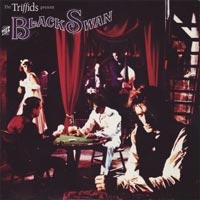 Die
Triffids sind für mich - nach den Go-Betweens
- ganz klar meine liebste Band aus Australien. Entdeckt hatte ich sie
Anfang 1987 (zeitgleich mit den Go-Betweens!)
durch die bezaubernde, aber unterbewertete Scheunensession "In
The Pines" (1986) und das grandiose Majordebüt "Calenture"
(1987) . Als dann "The Black Swan" herauskam war ich zuerst
etwas enttäuscht, weil auf dem Album viel mit Drumcomputern gearbeitet
wird und sich beim ersten Hören kein Ohrwurm der Güte von "Raining
Pleasure", "Wide Open Road" oder "Bury Me Deep In
Love" finden lässt. Trotzdem ist das ein tolles Album mit tollen
Songs von David McComb, leider auch
das letzte Album der Band: der Schwanengesang sozusagen. Die
Triffids sind für mich - nach den Go-Betweens
- ganz klar meine liebste Band aus Australien. Entdeckt hatte ich sie
Anfang 1987 (zeitgleich mit den Go-Betweens!)
durch die bezaubernde, aber unterbewertete Scheunensession "In
The Pines" (1986) und das grandiose Majordebüt "Calenture"
(1987) . Als dann "The Black Swan" herauskam war ich zuerst
etwas enttäuscht, weil auf dem Album viel mit Drumcomputern gearbeitet
wird und sich beim ersten Hören kein Ohrwurm der Güte von "Raining
Pleasure", "Wide Open Road" oder "Bury Me Deep In
Love" finden lässt. Trotzdem ist das ein tolles Album mit tollen
Songs von David McComb, leider auch
das letzte Album der Band: der Schwanengesang sozusagen.
(02.12.2008)
|
| "Lucinda Williams" (Rough Trade, Jan. 1989) |
 Das
erste beeindruckende Werk der Sängerin und Songschreiberin nach
zwei puristischen Folkbluesalben in den frühen 80ern. Man kann
das vielleicht ganz gut daran erkennen, welche Songs der Platte später
von anderen Künstlern gecovert wurden: natürlich "Passionate
Kisses", womit Mary-Chapin Carpenter die Country-Charts
stürmte, aber auch "Changed The Locks" (Silos),
"Crescent City" (Emmylou Harris), "Side
Of The Road" (The Schramms und auch Waiting For Louise!),
"Price To Pay" (Prairie Oyster aus Kanada) und "Something
About What Happens When We Talk" (Baby You Know aus Niederbayern). Das
erste beeindruckende Werk der Sängerin und Songschreiberin nach
zwei puristischen Folkbluesalben in den frühen 80ern. Man kann
das vielleicht ganz gut daran erkennen, welche Songs der Platte später
von anderen Künstlern gecovert wurden: natürlich "Passionate
Kisses", womit Mary-Chapin Carpenter die Country-Charts
stürmte, aber auch "Changed The Locks" (Silos),
"Crescent City" (Emmylou Harris), "Side
Of The Road" (The Schramms und auch Waiting For Louise!),
"Price To Pay" (Prairie Oyster aus Kanada) und "Something
About What Happens When We Talk" (Baby You Know aus Niederbayern). |
| Elvis Costello: "Spike" Feb. 1989) |
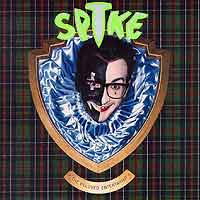 Far
removed from Blood & Chocolate, Spike was released to rave reviews
and was Elvis' most successful album since Punch The Clock. Far
removed from Blood & Chocolate, Spike was released to rave reviews
and was Elvis' most successful album since Punch The Clock.
"It's just a bunch of songs, you can buy them if you want and
it's up to people to sort out what they mean to them". (EC)
|
| Bob Dylan & The Grateful Dead: "Dylan & The Dead" (Columbia, Feb. 1989) |
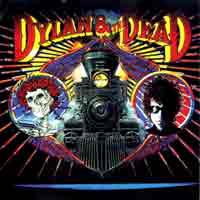

 Mehr ...
Mehr ...
Quite possibly the worst album by either Bob Dylan or the Grateful Dead, the live Dylan & the Dead completely squanders its promise. Working from an intriguing selection of songs -- it includes staples like "Knockin' on Heaven's Door" and more obscure gems like "Joey" -- the Dead and Dylan contribute listless, meandering versions that are simply boring. Both artists have done much better -- reportedly they have done better together, according to various bootleg fans -- but Dylan & the Dead is a sad, disheartening document.
(by Stephen Thomas Erlewine, All Music Guide)
|
| The Replacements: "Don't Tell A Soul" (Sire, Feb. 1989) |
|
 "The
full-blown production made some cry sell out, but Don't Tell a Soul
contained a heightened level of melodicism that produced some wonderful
moments. If Don't Tell a Soul hadn't been a Replacements album, its
appealingly sloppy melodic power-pop would have, more than likely,
earned rave reviews." (John Floyd, All Music Guide) "The
full-blown production made some cry sell out, but Don't Tell a Soul
contained a heightened level of melodicism that produced some wonderful
moments. If Don't Tell a Soul hadn't been a Replacements album, its
appealingly sloppy melodic power-pop would have, more than likely,
earned rave reviews." (John Floyd, All Music Guide)
Ich liebe diese Platte, auf der Paul Westerberg seine Songs
in dieser wunderbaren Mischung aus Schönheit und Zerrissenheit
singt ("They're Blind" ist einfach göttlich) und die
Band (Chris Mars am Schlagzeug, Tommy Stinson am Bass
und der neue Leadgitarrist Slim Dunlap) auch in diesen Liedern
ihre Punkrockwurzeln nicht ganz vergisst. In einem anderen Universum
wären die Replacements und Alex Chilton die größten - und
nicht U2, R.E.M. oder Guns'n'Roses! Bei Letzteren verdient Tommy
Stinson inzwischen sein Geld. Es sei ihm gegönnt.
|
| XTC: "Oranges & Lemons" (Virgin, Feb. 1989) |
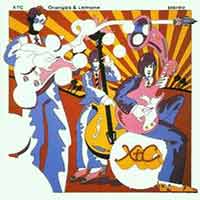

 Mehr ...
Mehr ...
Skylarking was an ambitious yet concise record, one that recalled such graceful concept albums as Pet Sounds and Sgt. Pepper, so it wasn't entirely a surprise that XTC embraced psychedelia on its double-album follow-up, Oranges & Lemons, especially if their celebrated Dukes of Stratosphear side project was taken into consideration as well. Oranges & Lemons lacks the singular focus of Skylarking, but at its best, it's just as impressive as its predecessor. Instead of revelling in the form of psychedelic pop, as they did with the Dukes, XTC bring the genre's sensibility to the mature pop of Skylarking, spiking it with a wry, occasionally absurd sense of humor missing from its predecessor. The result is a record exploding with details, not the least of which are backward guitars, sound effects, and head-spinningly eclectic arrangements. It's sonically rich and filled with immaculately crafted songs, but Oranges & Lemons falls just short of being a tour de force, since each song feels like an island -- they work well as individual tracks, but they don't form a cohesive statement. However, that's a minor complaint, because Colin Moulding and Andy Partridge in particular are in peak form, contributing some of their very finest songs in "Garden of Earthly Delights," "The Loving," "One of the Millions," "Merely a Man," "Pink Thing," and the elegiac "Chalkhills and Children." Such songs make the relative weaknesses of the album well worth enduring.
(by Stephen Thomas Erlewine, All Music Guide)
|
| Jerry Garcia Acoustic Band: "Almost Acoustic" (Grateful Dead Rec., März 1989) |
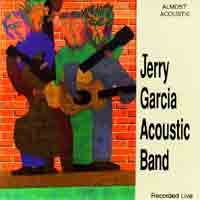 Bereits
im Herbst 1987 entstandener Konzertmitschnitt der akustischen Variante
von Garcias Hobbyband, zu der sein Kumpel aus alten Bluesgrasstagen
Sandy Rothman (dobro, mandoline), der Gitarrist David Nelson
von den New Riders Of The Purple Sage
und Jerrys Stammbassist John Kahn gehören. Unterstützt
werden sie von Kenny Kosek an der Geige und David Kemper
an der Trommel. Geboten werden Folksongs und Spirituals, aber auch eine
Dead-Nummern ("Ripple"). Besonders schön gelingt der
alte Heuler "Swing Low, Sweet Chariot", den ich nach meine
erschütternden CVJM-Erfahrungen in der Jugend eigentlich für
unspielbar hielt. Bereits
im Herbst 1987 entstandener Konzertmitschnitt der akustischen Variante
von Garcias Hobbyband, zu der sein Kumpel aus alten Bluesgrasstagen
Sandy Rothman (dobro, mandoline), der Gitarrist David Nelson
von den New Riders Of The Purple Sage
und Jerrys Stammbassist John Kahn gehören. Unterstützt
werden sie von Kenny Kosek an der Geige und David Kemper
an der Trommel. Geboten werden Folksongs und Spirituals, aber auch eine
Dead-Nummern ("Ripple"). Besonders schön gelingt der
alte Heuler "Swing Low, Sweet Chariot", den ich nach meine
erschütternden CVJM-Erfahrungen in der Jugend eigentlich für
unspielbar hielt. |
| Neville Brothers: "Yellow Moon" (A&M, März 1989) |
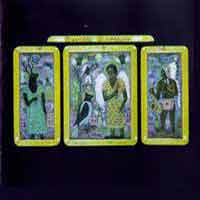 Live
war die Band um die 4 Brüder Art (Gesang & Orgel, Ex-Meters),
Aaron ("THE VOICE"), Cyril (Gesang & Perkussion)
und Charles (Saxofon) schon immer der Oberhammer - und endlich
haben sie es geschafft, diese Qualität auch im Studio umzusetzen.
Dabei war die Hilfe von Produzent Daniel Lanois sicherlich wichtig.
Im Gegensatz zum schwachen Vorgängeralbum "Uptown" wurde
hier nicht einfach versucht, ein weiteres durchschnittliches Mainstreamalbum
aufzunehmen. Live
war die Band um die 4 Brüder Art (Gesang & Orgel, Ex-Meters),
Aaron ("THE VOICE"), Cyril (Gesang & Perkussion)
und Charles (Saxofon) schon immer der Oberhammer - und endlich
haben sie es geschafft, diese Qualität auch im Studio umzusetzen.
Dabei war die Hilfe von Produzent Daniel Lanois sicherlich wichtig.
Im Gegensatz zum schwachen Vorgängeralbum "Uptown" wurde
hier nicht einfach versucht, ein weiteres durchschnittliches Mainstreamalbum
aufzunehmen. |
| Peter Case: "The Man With The Blue Post Modern Fragmented Neo-Traditionalist Guitar" (Geffen, April 1989) |
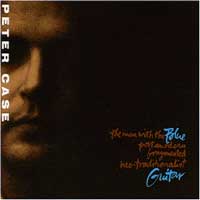 Bereits
das 2. Soloalbum des Ex-Plimsouls-Sängers mit einem genialen
Titel, aber meine erste Begegnung mit dem Mann. Tolle Songs und interessante
musikalische Gäste, z.B. Ry Cooder, David Lindley,
Jim Keltner, sowie Leuten von Los Lobos und Tom Petty's
Heartbreakers machen diese Platte zu einem Highlight in seiner "Karriere".
Anspieltipps: "Travelin' Light," "Two Angels," und
"Put Down the Gun". Bereits
das 2. Soloalbum des Ex-Plimsouls-Sängers mit einem genialen
Titel, aber meine erste Begegnung mit dem Mann. Tolle Songs und interessante
musikalische Gäste, z.B. Ry Cooder, David Lindley,
Jim Keltner, sowie Leuten von Los Lobos und Tom Petty's
Heartbreakers machen diese Platte zu einem Highlight in seiner "Karriere".
Anspieltipps: "Travelin' Light," "Two Angels," und
"Put Down the Gun". |
| Lemonheads: "Lick" (Taang, April 1989) |
|
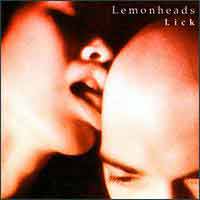 Mitten in einer Umbruchphase der Band erschien dieses 3. Album, zum
letzten Mal "independent", schwankend zwischen genial und
völlig zerfahren - und auch klanglich kein Genuss. Deutlich kann
man hören, dass die beiden Sänger/Gitarristen/Songschreiber
Evan Dando und Ben Deilly sich nicht stilistisch einigen
konnten. Es gab auch keinen festen Drummer (der Job wurde im Studio
von Dando übernommen, der genauso wie J Mascis von Dinosaur
Jr. scheinbar sehr gerne trommelt!). Deilly verließ nach dem Album
die Band, die danach dann von Evan Dando dominiert wurde, der auch
endlich wieder einen Trommler anheuerte und sich selber die Gitarre
umhängte.
Mitten in einer Umbruchphase der Band erschien dieses 3. Album, zum
letzten Mal "independent", schwankend zwischen genial und
völlig zerfahren - und auch klanglich kein Genuss. Deutlich kann
man hören, dass die beiden Sänger/Gitarristen/Songschreiber
Evan Dando und Ben Deilly sich nicht stilistisch einigen
konnten. Es gab auch keinen festen Drummer (der Job wurde im Studio
von Dando übernommen, der genauso wie J Mascis von Dinosaur
Jr. scheinbar sehr gerne trommelt!). Deilly verließ nach dem Album
die Band, die danach dann von Evan Dando dominiert wurde, der auch
endlich wieder einen Trommler anheuerte und sich selber die Gitarre
umhängte.
Warum trotzdem dieses Album auf dieser Seite? Nostalgie? Sentimentalität?
Klar, Evan Dando war mit seinem Trio damals ein echtes Ereignis und
meine erste Begegnung mit etwas, das man damals wohl "Punkrock"
nennen durfte. Einmal sind mein alter Freund Peter und ich sogar wegen
der Band mitten in der Woche zur Rockfabrik in Übach-Dingenskirchen,
irgendwo im Niemandsland zwischen Mönchengladbach und Aachen,
geheizt. Außerdem gibt es einen Song auf der Platte, der den Kauf
in jedem Fall lohnt: Suzanne Vegas
"Luka". War damals ein richtiger kleiner "Indie-Hit"!
Ansonsten: ein ziemlich hässliches Cover.

 Mehr ...
Mehr ...
| "Although it's fairly incoherent, bouncing back and
forth between punk-pop and folky pop, Lick is a thoroughly engaging record.
The tensions between Evan Dando and Ben Deily are fairly evident throughout
the album, especially since Dando's songs, with their immediate hooks and
melodies, outshine his bandmates, but that unevenness makes the record endearingly
messy. Also, the mess makes the group's best songs, including an inspired
electric cover of Suzanne Vega's "Luka," shine all the more brightly."
(Stephen Thomas Erlewine, All Music Guide) |
|
| Bonnie Raitt: "Nick Of Time" (Capitol, April 1989) |
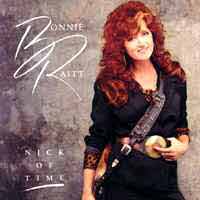 Ein
schönes Comeback nach einer langen Durststrecke für eine der
besten Bottleneckgitarristinnen und dazu erstklassigen Sängerin.
Das Werk ist zwar sehr "mainstreamig" geworden, aber dank
guter Songs (z.B. ihr eigener "Nick Of Time" und John Hiatts
"Thing Called Love") und guter Band (Ex-Copperhead-Sänger
Hutch Hutchinson am Bass und Ex-Beach-Boy-zur-Holland-Phase
Ricky Fataar am Schlagzeug) trotzdem gelungen. Und zum ersten
mal wurde das auch vom Platten kaufenden Publikum erkannt! Warum auch
nicht? Die Folgealben waren dann allerdings ähnlich gestrickt,
aber leider nicht von gleicher Klasse. Ein
schönes Comeback nach einer langen Durststrecke für eine der
besten Bottleneckgitarristinnen und dazu erstklassigen Sängerin.
Das Werk ist zwar sehr "mainstreamig" geworden, aber dank
guter Songs (z.B. ihr eigener "Nick Of Time" und John Hiatts
"Thing Called Love") und guter Band (Ex-Copperhead-Sänger
Hutch Hutchinson am Bass und Ex-Beach-Boy-zur-Holland-Phase
Ricky Fataar am Schlagzeug) trotzdem gelungen. Und zum ersten
mal wurde das auch vom Platten kaufenden Publikum erkannt! Warum auch
nicht? Die Folgealben waren dann allerdings ähnlich gestrickt,
aber leider nicht von gleicher Klasse.

 Mehr ...
Mehr ...
|
After being dumped by her previous label, blues rocker Raitt exacted
revenge with this multi-platinum Grammy-award winner. Producer Don Was
helped her sharpen the songs without sacrificing any of her slide-guitar
fire. And as Raitt herself pointed out, her tenth try was "my first
sober album."
(Rolling Stone)
Total album sales: 5.6 million
|
|
| Gavin Friday & The Man Seezer: "Each Man Kills The Things He Loves" (Island, Mai 1989) |
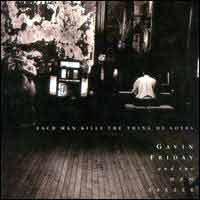 Ehemaliger irscher (Punk?)-Sänger macht auf Kunstgewerbe? Für
viele Fans seiner alten Band Virgin Prunes
war das sicherlich Verrat. Für alle anderen: eine gute Singer/Songwriter-Platte
in der Tom Waits-Tradition. Dafür sorgen Produzentenlegende Hal
Wilner und seine New-Yorker Musiker: die Gitarristen Bill Frisell
und Marc Ribot, Michael Blair am Schlagzeug und Fernando
Saunders am Bass. Als Chor hören wir Mark Volman und
Howard Kaylan, besser bekannt als Flo & Eddie, die
ehemaligen Sänger der Turtles und bei Zappa und T.Rex.
Am Piano sitzt "The Man Seezer", der sogar auf
dem Plattencover besonders gefeatured wird, mir aber ansonsten völlig
unbekannt ist. Gerüchteweise soll Gavin Friday das Album selber
nicht (mehr) mögen. Mir egal.
Ehemaliger irscher (Punk?)-Sänger macht auf Kunstgewerbe? Für
viele Fans seiner alten Band Virgin Prunes
war das sicherlich Verrat. Für alle anderen: eine gute Singer/Songwriter-Platte
in der Tom Waits-Tradition. Dafür sorgen Produzentenlegende Hal
Wilner und seine New-Yorker Musiker: die Gitarristen Bill Frisell
und Marc Ribot, Michael Blair am Schlagzeug und Fernando
Saunders am Bass. Als Chor hören wir Mark Volman und
Howard Kaylan, besser bekannt als Flo & Eddie, die
ehemaligen Sänger der Turtles und bei Zappa und T.Rex.
Am Piano sitzt "The Man Seezer", der sogar auf
dem Plattencover besonders gefeatured wird, mir aber ansonsten völlig
unbekannt ist. Gerüchteweise soll Gavin Friday das Album selber
nicht (mehr) mögen. Mir egal.

 Mehr ...
Mehr ...
Making his solo debut with a nod to an earlier Irish aesthete, Friday's album isn't merely titled after a legendary line from Oscar Wilde's Ballad of Reading Gaol, but kicks off with the title track, where all lyrics in fact come from said poem. Each Man Kills shows a slightly calmer Friday at play, making the same transition to Scott Walker-inspired dark, spiked cabaret that kindred spirits Nick Cave and Marc Almond also did in their own solo careers to one extent or another. Friday's own take on that spirit actually fits exactly between Cave and Almond's work � the slow pace and country twang of "Tell-Tale Heart" could come right from Your Funeral My Trial. The fact that Friday covers two songs here that Cave and Almond would each separately do later (Bob Dylan's "Death Is Not the End" and Jacques Brel's "Next") further shows the similar inspirations shared. In keeping with the overall transformation, Friday eschews the over the top wails and shrieks of his younger days � his register is still high, but the delivery is much more controlled, showing a greater range while losing none of his desperate passion. Seezer contributes fine lead keyboard work throughout, but Friday's other key partner is producer Hal Willner, who had clearly demonstrated his own credentials for this kind of music with his Kurt Weill tribute album a few years previously. With a range of talented New York types to work with, including Bill Frisell and Fernando Saunders, Willner gets sympathetic performances from all to back Friday and Seezer's explorations into wrecked romance, tortured souls and 2 a.m. moods. It isn't mere recreation of 1930's Berlin, but a palette of styles, from the dank, slow crawl of "Dazzle and Delight" to the soaring "You Take Away the Sun" and the kicking glam rock-inspired "Man of Misfortune."
(by Ned Raggett, All Music Guide)
|
| Pere Ubu: "Cloudland" (Fontana, Mai 1989) |
 Dieses
ist sicherlich eines der kommerziellsten Album der Avantgardeband um
den Sänger David Thomas - und wird von den Hardcore-Fans
auch nicht wirklich geliebt. Es ist aber mein persönlicher Einstieg
in den Pere-Ubu-Kosmos und hat mit "Waiting For Mary" einen
richtigen Ohrwurm, der in einer besseren Welt ein Hit geworden wäre. Dieses
ist sicherlich eines der kommerziellsten Album der Avantgardeband um
den Sänger David Thomas - und wird von den Hardcore-Fans
auch nicht wirklich geliebt. Es ist aber mein persönlicher Einstieg
in den Pere-Ubu-Kosmos und hat mit "Waiting For Mary" einen
richtigen Ohrwurm, der in einer besseren Welt ein Hit geworden wäre. |
| Maria McKee (Geffen, Juni 1989) |
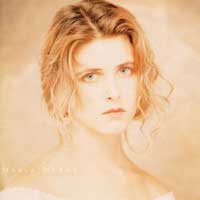 Das
Solodebüt der ehemaligen Sängerin von Lone
Justice. Eine wunderbar altmodisch klingende Platte, die von der
Orgel ihres aus den Lone Justice-Tagen
übrig gebliebenen Mitspielers Bruce Brody getragen wird.
Außerdem lenkt das Coverfoto sicherlich eher davon ab, dass Maria McKee
eine großartige Sängerin und Songschreiberin ist und keine dumpfe
Singmaus. Neben den erwähnten eigenen Klassesongs (z.B. "I've
Forgotten What It Was In You", "To Miss Someone", "Panic
Beach" oder "This Property Is Condemned") gibt es auch
die überraschende Coverversion der alten Richard
& Linda Thompson-Nummer "Has He Got A Friend For Me".
Richard Thompson ist auch mit einigen seiner genialen Gitarrensoli
dabei, Jim Keltner trommelt grandios und Mitchell Froom
liefert eine saubere Produktionsarbeit. Das
Solodebüt der ehemaligen Sängerin von Lone
Justice. Eine wunderbar altmodisch klingende Platte, die von der
Orgel ihres aus den Lone Justice-Tagen
übrig gebliebenen Mitspielers Bruce Brody getragen wird.
Außerdem lenkt das Coverfoto sicherlich eher davon ab, dass Maria McKee
eine großartige Sängerin und Songschreiberin ist und keine dumpfe
Singmaus. Neben den erwähnten eigenen Klassesongs (z.B. "I've
Forgotten What It Was In You", "To Miss Someone", "Panic
Beach" oder "This Property Is Condemned") gibt es auch
die überraschende Coverversion der alten Richard
& Linda Thompson-Nummer "Has He Got A Friend For Me".
Richard Thompson ist auch mit einigen seiner genialen Gitarrensoli
dabei, Jim Keltner trommelt grandios und Mitchell Froom
liefert eine saubere Produktionsarbeit. |
| The New Christs: "Distemper" (Citadel, Juni 1989) |
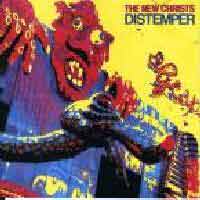 Ein
australischen Quartett um den Sänger Rob Younger (Ex-Radio
Birdman) und den Gitarristen Charlie Owen. Harter Rock, aber
trotzdem (und Gott sei Dank) kein Punk oder Metall! Im Sound am ehesten
noch mit den Stooges oder den MC5
zu vergleichen Ein
australischen Quartett um den Sänger Rob Younger (Ex-Radio
Birdman) und den Gitarristen Charlie Owen. Harter Rock, aber
trotzdem (und Gott sei Dank) kein Punk oder Metall! Im Sound am ehesten
noch mit den Stooges oder den MC5
zu vergleichen |
| del Amitri: "The Waking
Hour" (A&M, Juli 1989) |
 Das zweite Album - nicht wie viele glauben, das erste (4 Jahre zuvor
erschien das titellose Debütalbum)
- und endlich der große Durchbruch der schottischen Band um den Sänger,
Bassisten und Songschreiber Justin Currie und den Gitarristen
Iain Harvey, nicht zuletzt deshalb, weil es diesesmal gleich
4 Singlehits gibt: natürlich das bekannte "Nothing Ever Happens",
aber auch "Kiss This Thing Goodbye", "Stone Cold Sober"
und "Move Away Jimmy Blue".
Das zweite Album - nicht wie viele glauben, das erste (4 Jahre zuvor
erschien das titellose Debütalbum)
- und endlich der große Durchbruch der schottischen Band um den Sänger,
Bassisten und Songschreiber Justin Currie und den Gitarristen
Iain Harvey, nicht zuletzt deshalb, weil es diesesmal gleich
4 Singlehits gibt: natürlich das bekannte "Nothing Ever Happens",
aber auch "Kiss This Thing Goodbye", "Stone Cold Sober"
und "Move Away Jimmy Blue".

 Mehr ...
Mehr ...
Went to see Del Amitri in March 1990 live in McGonagles, a now defunct venue in Sth. Anne Street, in Dublin. I didn't really want to go. I only knew one song which is the very last song on the album - 'Nothing ever happens'. The Dels seemed to be perplexed with the crowd - come on they shouted. The only song anyone seemed to know was 'Nothing ever happens'. Iwas blown away and immediately ran out the next day in my lunch hour to buy WAKING HOURS. Some people say that on WAKING HOURS Del Amitri found America. I dunno. Their first album in good in an indie sort of way but this is pure listening. Nobody's perfect, and thats something that I'm sure she'll know. How many people have thought that when they are (insecurely going out with someone?) or you've been reading SOS when its just your clock reading 505. Justin Currie's lyrics strike a chord with us insecure people left on this earth - and at the turn of the millennium, I'm afraid there are quite a lot of us. His songs, on this album, on the perfectly produced Change Everything or on the grown up album Twisted, wrench the heart out of you, tell of love lost, on purpose and by accident. They are a soap opera to themselves. Buy all the DELS stuff. They may not be the trendiest band around, but they certainly know how to strike that chord in your heart that hasn't been struck since that girl you asked to dance when you were 14 said 'no' or that guy you fancied like crazy asked your best friend to dance instead of you.
|
| Indigo Girls (Epic, Juli 1989) |
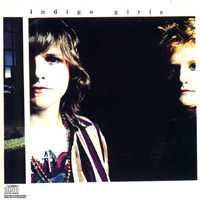 Klassedebüt
der beiden Sängerinnen und Songschreiberinnen Emily Saliers
und Amy Ray, produziert von Scott Litt, der schon für
R.E.M. die Alben "Document"
(1987) und "Green" (1988)
betreut hatte und auch seine berühmten Arbeitgeber komplett ins
Studio einladen konnte. Ebenfalls dabei die fast kompletten Hothouse
Flowers aus Irland und deren Landsmann Luka Bloom. Schöne
Platte. Mit "Closer To Fine" ist sogar direkt ein echer Hit
dabei. Klassedebüt
der beiden Sängerinnen und Songschreiberinnen Emily Saliers
und Amy Ray, produziert von Scott Litt, der schon für
R.E.M. die Alben "Document"
(1987) und "Green" (1988)
betreut hatte und auch seine berühmten Arbeitgeber komplett ins
Studio einladen konnte. Ebenfalls dabei die fast kompletten Hothouse
Flowers aus Irland und deren Landsmann Luka Bloom. Schöne
Platte. Mit "Closer To Fine" ist sogar direkt ein echer Hit
dabei. |
| Bob Mould: "Workbook" (Virgin, Juli 1989) |
 Nach dem Punkrock von Hüsker Dü
hier das stärker akustisch orientierte Solodebüt. Mit Anton
Fier (dr) und Tony Maimone (bg) stand Mould eine virtuose
Rhythmusgruppe zur Verfügung, die aber Gott sei Dank nicht "muckermäßig"
klang. Das Glanzlicht des Albums ist allerdings das omnipräsente
Cello von Jane Scarpantoni.
Nach dem Punkrock von Hüsker Dü
hier das stärker akustisch orientierte Solodebüt. Mit Anton
Fier (dr) und Tony Maimone (bg) stand Mould eine virtuose
Rhythmusgruppe zur Verfügung, die aber Gott sei Dank nicht "muckermäßig"
klang. Das Glanzlicht des Albums ist allerdings das omnipräsente
Cello von Jane Scarpantoni.

 Mehr ...
Mehr ...
Arriving after years of sonic bombast in Hüsker the reflective, acoustic nature of Bob Mould´s first solo album, Workbook, was a bold statement of renewal. Like all of Mould's work, it's an intensely introspective record, finding him purging demons left over from the dissolution of Hüsker Dü. Instead of relying on raging guitars, Mould explores a wide variety of styles, from pure pop ("See a Little Light") to reflective folk laced with cellos. It´s an astonishing array of styles, and the songs are among Mould´s finest. For many observers, the record established him as a major songwriter, but it also established a way for underground post-punk artists to mature -- echoes of Workbook could be heard throughout the ´90s, from R.E.M.´s elegiac Automatic for the People to Nirvana´s use of cellos on In Utero and Unplugged. But Workbook remains a stunning work of individuality, marrying a distinctive body of songs with an original musical vision. Occasionally, the production is a little too pristine, but the power of the songs cannot be diminished
(Stephen Thomas Erlewine, All Music Guide)
Workbook was the beginning of a fresh chapter in Mould's life, being the first album he'd released since the demise of Husker Du in 1988 & leaving Warners to sign to Virgin America. Husker Du, like The Replacements, found themselves close to being the next big thing (this would turn out to be REM, in retrospect)- songs like Could You Be the One?, Hardly Getting Over It & Sorry Somehow should all have been huge...the Du are often cited as the band without whom no Pixies, no Nirvana...Here Mould leaves the sound of Husker Du behind- rumoured to have become bored of the formula, the Du had moved from Ramones power-punk pop to New Wave paranoia to hardcore punk to psychelic feedback freakouts to jangly guitar pop. On Workbook, Mould wrote & produced the songs, working with Anton Fier (Golden Palominos) & Jane Scarpantoni (Lou Reed's Ecstasy). The use of cello on most of the tracks predicts the approach of Nirvana's Unplugged...Mould is more of a classic singer-songwriter here, somewhere between Candy Apple Grey/Warehouse-Du and Richard Thompson- the lyrics are quite bleak- its hard not to think of Husker Du/Grant Hart when hearing words like "these poison years, it's just a memory" or "They've held me down for long enough; Like a flower I need to grow". In fact, Compositions for the Young & Old stems from the post-Warehouse era of Husker Du, which produced the underwhelming Ain't No Water in the Well & the standard Now That You Know Me. The acoustic sound is suitably lovely, fitting easily alongside REM's Green and Replacements'Don't Tell a Soul. Mould also goes for that upbeat college rock thing with See a Little Light & Dreaming I Am- Mould's fresh sobriety & outlook hinting at the postive. Workbook is Mould's year zero then- he's only really started embracing Husker Du-era material recently. Tracks like Brasilia Crossed with Trenton & Whichever Way The Wind Blows see Mould move towards more epic structures than usual- very much continued on his next solo album. The greatest track for me is the opening salvo of instrumental Sunspots and Wishing Well- the latter showcasing Mould's melancholic sensibilities with sublime acoustics & strings. Wishing Well is easily one of Mould's greatest songs from before or after this album. Workbook is ideal Autumn, Winter music, just the right side of MOR- though I don't know how fans expect artists to freeze on Land Speed Record, New Day Rising or Candy Apple Grey. Mould would shift from this record to the epic rock of Black Sheets of Rain (much more a downer & the album Ragged Glory should have been!), prior to the poppy-Du of Sugar. The Virgin/Solo years are looked over, which is a shame- one final piece of advice: buy both Workbook & Black Sheets...rather than the Poison Years compilation (though you might want that for the storming cover of Shoot Out the Lights...)...just buy the lot!
|
| Ferryboat Bill: "Luke The Drifter" (Big Store, Aug. 1989) |
 Eine
deutsche Band aus dem Dortmunder Vorort Waltrop benennt sich nach einem
eher unbekannten Velvet Underground-Song und spielt eine wunderbare
Gitarrenmusik, die amerikanischer klingt als viele amerikanische Produktionen!
Vielleicht kann man im Westfälischen die großen Weiten der US of
A besser nachempfinden als anderswo? Ist ja auch völlig egal, denn
wir haben hier eine Klasseband (mit den singenden und Gitarre spielenden
Brüdern Klaus und Bernd Uebelhöde) und guten
Songs. Die Platte war '89 sogar in den Jahrescharts vom Musikexpress,
trotzdem hat's nicht für die große Karriere gereicht. Rockstars
heißen eben nicht Uebelhöde und kommen nicht aus
Waltrop. Eine
deutsche Band aus dem Dortmunder Vorort Waltrop benennt sich nach einem
eher unbekannten Velvet Underground-Song und spielt eine wunderbare
Gitarrenmusik, die amerikanischer klingt als viele amerikanische Produktionen!
Vielleicht kann man im Westfälischen die großen Weiten der US of
A besser nachempfinden als anderswo? Ist ja auch völlig egal, denn
wir haben hier eine Klasseband (mit den singenden und Gitarre spielenden
Brüdern Klaus und Bernd Uebelhöde) und guten
Songs. Die Platte war '89 sogar in den Jahrescharts vom Musikexpress,
trotzdem hat's nicht für die große Karriere gereicht. Rockstars
heißen eben nicht Uebelhöde und kommen nicht aus
Waltrop. |
| Camper Van Beethoven: "Key Lime Pie" (Virgin, Sept.1989) |
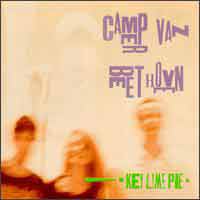 Die
letzte Platte dieser genialen Witzbolde war ihre beste. Danach trennten
sich die Wege. Sänger David Lowery wurde mit Cracker
kommerziell etwas erfolgreicher, die anderen trieben die schrägen
Elemente ihrer Musik (natürlich jetzt ganz ohne kommerziellen Erfolg)
unter dem Namen "Monks Of Doom" weiter. Die
letzte Platte dieser genialen Witzbolde war ihre beste. Danach trennten
sich die Wege. Sänger David Lowery wurde mit Cracker
kommerziell etwas erfolgreicher, die anderen trieben die schrägen
Elemente ihrer Musik (natürlich jetzt ganz ohne kommerziellen Erfolg)
unter dem Namen "Monks Of Doom" weiter.

 Mehr ...
Mehr ...
Our Beloved Revolutionary Sweetheart closed with Lowery singing about how "Life Is Grand" in pointed response to "those of you who have appointed yourselves to expect us to say something darker." So when Key Lime Pie came out, its moodier music and imagery, not to mention that soon after the fact the band fell apart on the tour for the album, led more than one person to think those darker times had finally arrived. As it is, the group had already gone through one major shake-up between the two albums -- founding member Segel had taken a powder to concentrate on other efforts, with Morgan Fichter brought in as a replacement violinist. Her abilities were certainly praiseworthy, as the album-starting instrumental "Opening Theme" shows quite well. However, it's definitely not the same band that did Telephone Free Landslide Victory a mere four years previous -- things are more straightforwardly rock here most of the time, perhaps not too surprising in light of Lowery's subsequent work in Cracker. As it is, though, it's excellently conceived rock, with space, moodiness, and more to spare. Consider "Jack Ruby," with its wordless backing vocals, tense rhythms, and thick soloing, or "Laundromat" and its steady but unnerving crunch. It's not all potential melancholia, though -- "June" in particular is an underrated number, celebrating the early summer with sweetness and love (at least up to the increasingly stranger ending). Lowery's singing is his best yet, perhaps a little less prone to wackiness but an emergent, distinct voice all the same, and certainly prone to sing a quirky lyric or two still. The oddest thing of all was that the band actually gained a little mainstream attention on MTV and radio via a cover of Status Quo's psych-era nugget "Pictures of Matchstick Men."
(by Ned Raggett, All Music Guide)
|
| Bob Dylan: "Oh Mercy" (Columbia, Sept. 1989) |
 Nach
langer Durststrecke ("Knocked Out Loaded" von 86 und "Down
In The Groove" von 88 waren schon ziemlich schlappe Angelegenheiten)
verhalf Daniel Lanois his Bobness endlich wieder zu einem Big
Point! Dafür sorgten u.a. Cyril Neville, Brian Stolz,
Willie Green und Tony Hall von den Neville Brothers, die
ja auch gerade erst mit dem Kanadier Lanois das superbe "Yellow
Moon" aufgenommen hatten. Das alles wäre aber nichts ohne
diese wunderbaren Lieder: "Man In A Long Black Coat", "Most
Of The Time" , "What Was It You Wanted?" u. a. Nach
langer Durststrecke ("Knocked Out Loaded" von 86 und "Down
In The Groove" von 88 waren schon ziemlich schlappe Angelegenheiten)
verhalf Daniel Lanois his Bobness endlich wieder zu einem Big
Point! Dafür sorgten u.a. Cyril Neville, Brian Stolz,
Willie Green und Tony Hall von den Neville Brothers, die
ja auch gerade erst mit dem Kanadier Lanois das superbe "Yellow
Moon" aufgenommen hatten. Das alles wäre aber nichts ohne
diese wunderbaren Lieder: "Man In A Long Black Coat", "Most
Of The Time" , "What Was It You Wanted?" u. a. |
| Rickie Lee Jones: "Flying Cowboys" (Geffen, Sept. 1989) |
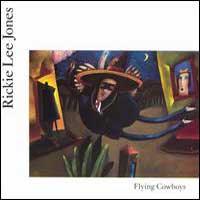 Rickie Zusammenarbeit mit Walter Becker ist damals leider etwas
untergegangen. Nach Gaucho (von
1980) nach meiner Kenntnis auch das einzige Lebenszeichen des Ex-Steely
Dan Gitarristen und Bassisten in den 80ern.
Rickie Zusammenarbeit mit Walter Becker ist damals leider etwas
untergegangen. Nach Gaucho (von
1980) nach meiner Kenntnis auch das einzige Lebenszeichen des Ex-Steely
Dan Gitarristen und Bassisten in den 80ern.

 Mehr ...
Mehr ...
| "Five years after the disappointing The Magazine, Rickie
Lee Jones returned to form with Flying Cowboys, which shared much of the
playful, childlike charm of her debut, Rickie Lee Jones, and some of the
musically diffuse, lyrically ambitious form of its follow-up, Pirates. From
the opening track, "The Horses," which suggested a mother's delight
with her child as much as a lover's devotion, Jones reintroduced the joyous
tone of her early work as well as establishing the Western theme that would
run through the album - cowboys, rodeos, horses, deserts - without adding
up to an actual story line. The easy rhythms and lazy, flexible singing
on the first few songs were reminiscent of Laura Nyro's work with Labelle
on their Gonna Take a Miracle album, after which Jones branched out into
reggae and folk-blues, coming up with an affectionate bluesman voice on
"Ghost Train." "Satellites," the college radio hit,
used the sprung rhythms and surprising choral parts familiar from her popular
early songs. If Jones could be obscure and unfocused as a writer, that weakness
was also her strength, since it was an expression of the imagination that
also produced her most striking musical effects. Producer Walter Becker
may have helped keep things from getting as grandiose as they had on The
Magazine, but it was really the artist herself who managed to rein in from
that album's self-importance. If what resulted was not as accomplished as
Pirates, it was the most accessible and enjoyable music Jones had made since
her debut." (William Ruhlmann) |
|
| Michael Penn: "March" (RCA, Sept. 1989) |
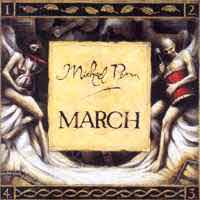 Das
Debüt des älteren Bruders der Schauspieler Sean Penn und Christopher
Penn. Ein vorzügliches Singer/Songwriter-Album in der Spielklasse
von Matthew Sweet und seiner
zukünftigen Ehefrau Aimee Mann. Das
Debüt des älteren Bruders der Schauspieler Sean Penn und Christopher
Penn. Ein vorzügliches Singer/Songwriter-Album in der Spielklasse
von Matthew Sweet und seiner
zukünftigen Ehefrau Aimee Mann.
(08.05.2009) |
| Chris Cacavas & Junkyard Love (Heyday, Okt. 1989) |
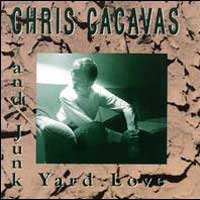 Solodebüt des Ex-Green On Red-Keyboarders,
allerdings vornehmlich als Sänger, Songschreiber und Gitarrist:
alles Talente, die er bei Green On Red kaum oder gar nicht nutzen konnte.
Gleichzeitig ist das Album mehr oder weniger der Start des San Francisco-Labels
Heyday von Pat Thomas, dem ehemaligen Absolute Grey-Drummer,
der uns danach auch noch mit Penelope
Houston, Sonya Hunter und anderen wunderbaren Platten beglückte.
Die Begleitband war eine kleine Supergruppe von Semi-Legenden: Drummer
Keith Mitchell spielte ebenfalls in einer frühen Green
On Red-Besetzung und danach mit David Roback bei Opal,
danach auch in deren Nachfolgeband Mazzy
Star. Bassist Mark Walton kam vom Dream Syndicate
und gründete später die Continental
Drifters. Leadgitarrist John Thoman spielte mit den Roback-Brüdern
bei Rain Parade und gründete
später mit Steve Roback die Band Viva Saturn. Gastauftritte
haben Bassist Tom Stevens von den Long
Ryders, Johnette Napolitano von Concrete
Blonde und Robert Lloyd (an Piano und Mandoline). Produziert
hat Steve Wynn, der ehemalige Sänger von Dream
Syndicate. Damit hätten wir einen groben Überblick mit
allen wichtigen Bands des "Paisley Undergrounds" getan, der
damals in den frühen 80ern mit seinem Byrds-, Stooges- oder Velvet
Underground- beeinflussten Gitarrenrock der einzige Lichtblick in einer
dunklen Phase der Rockmusik war.
Solodebüt des Ex-Green On Red-Keyboarders,
allerdings vornehmlich als Sänger, Songschreiber und Gitarrist:
alles Talente, die er bei Green On Red kaum oder gar nicht nutzen konnte.
Gleichzeitig ist das Album mehr oder weniger der Start des San Francisco-Labels
Heyday von Pat Thomas, dem ehemaligen Absolute Grey-Drummer,
der uns danach auch noch mit Penelope
Houston, Sonya Hunter und anderen wunderbaren Platten beglückte.
Die Begleitband war eine kleine Supergruppe von Semi-Legenden: Drummer
Keith Mitchell spielte ebenfalls in einer frühen Green
On Red-Besetzung und danach mit David Roback bei Opal,
danach auch in deren Nachfolgeband Mazzy
Star. Bassist Mark Walton kam vom Dream Syndicate
und gründete später die Continental
Drifters. Leadgitarrist John Thoman spielte mit den Roback-Brüdern
bei Rain Parade und gründete
später mit Steve Roback die Band Viva Saturn. Gastauftritte
haben Bassist Tom Stevens von den Long
Ryders, Johnette Napolitano von Concrete
Blonde und Robert Lloyd (an Piano und Mandoline). Produziert
hat Steve Wynn, der ehemalige Sänger von Dream
Syndicate. Damit hätten wir einen groben Überblick mit
allen wichtigen Bands des "Paisley Undergrounds" getan, der
damals in den frühen 80ern mit seinem Byrds-, Stooges- oder Velvet
Underground- beeinflussten Gitarrenrock der einzige Lichtblick in einer
dunklen Phase der Rockmusik war.

 Mehr ...
Mehr ...
|
Liner notes of the reissue by Pat Thomas
Of all the various artists I've worked with over the years, Chris Cacavas
holds a special place in my heart. First of all, the man is truly ego
less. Never once in 10 years have we had an argument or a disagreement
about my handling of his career or the release of his records on Heyday
or Normal Records. Never once has Chris said "no" to any idea
or concept I've thrown his way. If it makes sense, Chris is always the
first in line - ready and willing to go to bat for me or the label. He's
an A&R man's dream......
This CD, the self titled debut album; Chris Cacavas And Junk Yard Love,
put Heyday Records on the map. I've often said that I started Heyday to
release Barbara Manning's Scissors LP (which is true). But it was Chris'
record that made the music business stand up and take notice of what I
was trying to do and what Heyday Records was all about.
I still remember the day this record was released - it was in October
1989, the day of the big San Francisco earthquake - Sonya Hunter drove
over to my office in late afternoon (minutes after the earthquake hit)
and we loaded up 500 promotional copies of the LP into her little blue
Fiat and drove them over to her house and carried them into her bedroom
in near darkness (the power was out). A few days later we gathered a bunch
of people together and had a "mailing party", stuffing the LPs
into cardboard boxes and addressing them to journalists and radio stations.
Those were the "good old days" (when there was no paid Heyday
staff - just volunteers and other artists helping each other out).
I first met Chris through Steve Wynn and it was Steve that made sure
this record got finished......I had sent Chris some money to start recording
and about 6 months had gone by and nothing was happening. Chris had spent
the money on "important" things such as paying the rent and
feeding his family and I was still waiting for some tapes.... Finally
I suggested to Chris that he just record an acoustic album to get it done
quickly and cheaply. Chris assured me that was not a good idea, that a
"band" record needed to get made. I kept waiting.......
A few more months went by and I was telling Steve about the lack of progress
on this album. Steve kindly offered to produce the record for free (a
bottle of Jim Beam he said, would do the trick). Steve set up some rehearsal
time and booked the studio, I sent down some more cash and the party began.
Within weeks I was the proud owner of the great album you hold in your
hands today.
Because the first version of Junk Yard Love drew together members of
Green On Red, Opal, the Rain Parade, and the Long Ryders - I described
them in an early Heyday press release as a Derek And The Dominoes "super
group" for the 80's........
When I played a pre-release cassette of the album for the editor of CMJ
(a weekly college radio tip sheet), he said they sounded like the Buffalo
Springfield jamming with Steppenwolf. (while listening to the song "Angel
On A Mattress Spring"). We both smiled - I knew I had something hot.
A few months later, the album was featured on the cover of CMJ as "best
record of the week".
I love Chris Cacavas and frankly - who doesn't? When I travel through
Europe touring with my own band - at each club I meet plenty of fans,
club owners, and journalists that ask me; "Where's Chris?",
"How's Chris?" or tell me stories of his legend and greatness;
"He's played here 5 times and always puts on a great show",
"The last time he was here - he played for 3 hours", "We
consider him the house band"........the praise goes on and on.
A few weeks before I recorded my album Fresh, I was telling Chris about
the project; Steve Wynn was flying in from New York, Quintus Kannegiesser
was coming from Frankfurt, my old songwriting partner Bill Groome was
climbing out his cave to make an appearance.....Chris listened for awhile
and said "What about me?". I replied "well, you're busy
working on the New Improved Pain album, I didn't think you had any time".
Besides writing the song "I Ain't Your Mother" for me to sing,
Chris put his own album on hold and drove up from Los Angeles to join
in. He's the man.
There's been so many nights, so many times, in concert halls and clubs
from San Francisco to Berlin to Salzburg to Santa Rosa that Chris has
made the hairs stand up on the back of my neck. The pure passion that
this man holds is incredible. I've often discussed it with others - if
Chris knew the power he held over people, he'd be dangerous.
We've taken the time to remaster the original tapes and give it a little
more balls and warmth than the first pressing of the CD had. A lot has
changed with digital mastering in the last 10 years. With Chris' help,
I also located the original 5 song demo that made me sign Chris in the
first place. And there's a few other surprises on the CD too.
Thank you Chris for 10 great years of music.
And a special message to journalists:
you can stop referring to Chris as "ex-Green On Red". I think
he's his own man now....
Pat Thomas
San Francisco, September 1997
|
|
| Dave Graney & The White Buffaloes: "My Life On The Plains" (Fire, Okt. 1989) |
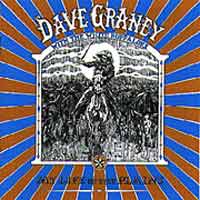 Sänger
Dave Graney und Trommlerin Clare Moore stammen aus Australien
und spielten zuvor bei den Moodists.
Während diese noch ziemlich krachigen Bluesrock mit monotonen Bass-
und Gitarrenriffs zelebrierten gibt es hier jetzt Countryrock mit vielen
kleinen Ecken und Kanten, ganz so wie ich ihn mag. Bei den drei Coverversionen
beweist Graney dann ganz großen Geschmack: "The
Dolphins" von Fred Neil (das aber viele wohl nur durch
Tim Buckleys Version kennen, "Brass
Buttons" von Gram Parsons (Graneys Version war der Auslöser
dafür, dass wir uns auch mit W4L dran versucht haben!) und "Misty
Morning" von Gene Clark. Letzteres mein klarer Favorit. Sänger
Dave Graney und Trommlerin Clare Moore stammen aus Australien
und spielten zuvor bei den Moodists.
Während diese noch ziemlich krachigen Bluesrock mit monotonen Bass-
und Gitarrenriffs zelebrierten gibt es hier jetzt Countryrock mit vielen
kleinen Ecken und Kanten, ganz so wie ich ihn mag. Bei den drei Coverversionen
beweist Graney dann ganz großen Geschmack: "The
Dolphins" von Fred Neil (das aber viele wohl nur durch
Tim Buckleys Version kennen, "Brass
Buttons" von Gram Parsons (Graneys Version war der Auslöser
dafür, dass wir uns auch mit W4L dran versucht haben!) und "Misty
Morning" von Gene Clark. Letzteres mein klarer Favorit. |
| The Grateful Dead: "Built To Last" (Arista, Okt. 1989) |
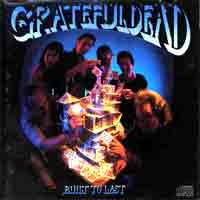 Das
letzte Studioalbum einer meiner allerliebsten Bands, nicht ganz so gelungen
wie "In The Dark",
das Comeback von 1987, bzw. eben nicht mehr so überraschend, aber
auch nicht wirklich schlecht. Das
letzte Studioalbum einer meiner allerliebsten Bands, nicht ganz so gelungen
wie "In The Dark",
das Comeback von 1987, bzw. eben nicht mehr so überraschend, aber
auch nicht wirklich schlecht.

 Mehr ...
Mehr ...
Supposedly, the Dead had broken their studio jinx with In the Dark and finally learned how to make good albums without an audience in front of them. So why was this follow-up such a letdown? Perhaps because they hadn't taken seven years to write and perfect new material as they had with the previous album. The dominant songwriter here was keyboard player Brent Mydland (who died the following year), while the crucial songwriting team of Garcia and Hunter contributed only minor efforts. Chastened, the Dead once again retreated from studio work.
(by William Ruhlmann, All Music Guide)
|
| Miracle Legion: "Me & Mr. Ray" (Rough Trade, Okt. 1989) |
 Das dritte Voll-Album der Band (nach der EP "Backyard" und
den Alben "Surprise Surprise"
und "Glad") steht zwar schon lange bei mir im Plattenschrank,
wurde aber bislang sträflich übersehen. Das hat vielleicht
daran gelegen, dass Sänger Mark Mulcahy und Gitarrist Ray
Neal hier weitestgehend spartanisch, fast folkmäßig,
im Duo arbeiten (Na? Den Titel des Albums jetzt verstanden?)
und nicht mehr so rockig sind wie bisher. Jetzt habe ich es mal wieder
herausgekramt und bin ein wenig überrascht, wie gut und zeitlos
diese Musik ist. Schade, dass die Band nie so erfolgreich wurde wie
z.B. R.E.M., mit denen sie immer wieder
verglichen wurden. Dabei finde ich gar nicht, dass Mulcahy wie
Stipe klingt. Auch nicht wie Van Morrison oder Waterboy
Mike Scott (so der Schreiber vom AllMusic Guide). Ich
fühle mich sogar eher an Loudon Wainwright
III erinnert. Wie auch immer.
Das dritte Voll-Album der Band (nach der EP "Backyard" und
den Alben "Surprise Surprise"
und "Glad") steht zwar schon lange bei mir im Plattenschrank,
wurde aber bislang sträflich übersehen. Das hat vielleicht
daran gelegen, dass Sänger Mark Mulcahy und Gitarrist Ray
Neal hier weitestgehend spartanisch, fast folkmäßig,
im Duo arbeiten (Na? Den Titel des Albums jetzt verstanden?)
und nicht mehr so rockig sind wie bisher. Jetzt habe ich es mal wieder
herausgekramt und bin ein wenig überrascht, wie gut und zeitlos
diese Musik ist. Schade, dass die Band nie so erfolgreich wurde wie
z.B. R.E.M., mit denen sie immer wieder
verglichen wurden. Dabei finde ich gar nicht, dass Mulcahy wie
Stipe klingt. Auch nicht wie Van Morrison oder Waterboy
Mike Scott (so der Schreiber vom AllMusic Guide). Ich
fühle mich sogar eher an Loudon Wainwright
III erinnert. Wie auch immer.
(27.03.2011)

 Mehr ...
Mehr ...
By this time, Mark Mulcahey and Neal Ray had become a duo and recorded this smart set of acoustic songs. Mulcahey has emerged as a great folk-rock singer in his own right, no longer trying to cop Michael Stipe, though through no fault of his own there are traces of Van Morrison and Mike Scott in his rush to spit out the verbiage, set to sturm und drang guitar work. He might have found some popularity in the singer-songwriter renaissance that would soon follow, but he began to fade from the public eye just as he was coming into his own.
(by Denise Sullivan, All Music Guide)
|
| Grant Hart: "Intolerance" (SST, Nov. 1989) |
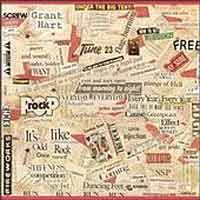 Nach
dem Trennungsfrust von Hüsker Dü
spielte deren Drummer Grant Hart sein Solodebüt ganz alleine ein,
wobei das Schlagzeug eher eine untergeordnete Rolle spielt und manchmal
sogar stattdessen eine Drum-Machine eingesetzt wird. Beeindruckend ist
eine Orgel, die Hart im Studio vorfand und dann bei fast allen Titeln
einsetzte. Mit dem Undergroundhit "2541", später von
Robert Forster und sogar von meinen Rusty Nails gecovert! Nach
dem Trennungsfrust von Hüsker Dü
spielte deren Drummer Grant Hart sein Solodebüt ganz alleine ein,
wobei das Schlagzeug eher eine untergeordnete Rolle spielt und manchmal
sogar stattdessen eine Drum-Machine eingesetzt wird. Beeindruckend ist
eine Orgel, die Hart im Studio vorfand und dann bei fast allen Titeln
einsetzte. Mit dem Undergroundhit "2541", später von
Robert Forster und sogar von meinen Rusty Nails gecovert! |
| Mekons: "Rock 'N Roll"
(Sin, Nov. 1989) |
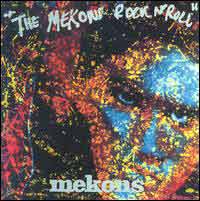 Jetzt
hätte ich in dieser Liste doch fast eine meiner Lieblingsbands
vergessen! Die Mekons fingen 1976 als Punks an und sind immer noch dabei,
ohne sich zu verbiegen. Jetzt
hätte ich in dieser Liste doch fast eine meiner Lieblingsbands
vergessen! Die Mekons fingen 1976 als Punks an und sind immer noch dabei,
ohne sich zu verbiegen. |
| Warren Zevon: "Transverse City" (Virgin, Nov. 1989) |
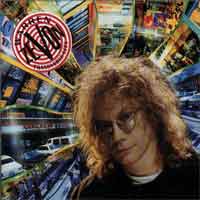 Zwar
ein furchtbares Cover - aber wie immer eine gute musikalische Leistung
des bösen Manns aus L.A. Obwohl Mr. Zevon es sicherlich lieber
hätte, dass ich von den klasse Songs berichten würde, kann
ich mich mal wieder nicht zurückhalten und muss hier mein Namedropping
loswerden. Alleine die folgende Liste der beteiligten Gastgitarristen
müsste aber alle, die einigermaßen einen Sinn haben für Rockgitarre,
überzeugen: Neil Young, Jerry Garcia (Grateful Dead),
David Gilmour (Pink Floyd), Jorma Kaukonen (Jefferson
Airplane, Hot Tuna), Waddy Wachtel (Jackson Browne, James Taylor,
etc.) und Mike Campbell (Tom Petty). Dazu kommen noch ein paar
hochkarätige Jazzer: Chick Corea (p), John Patitucci
(db) und Mark Isham (tp). Zwar
ein furchtbares Cover - aber wie immer eine gute musikalische Leistung
des bösen Manns aus L.A. Obwohl Mr. Zevon es sicherlich lieber
hätte, dass ich von den klasse Songs berichten würde, kann
ich mich mal wieder nicht zurückhalten und muss hier mein Namedropping
loswerden. Alleine die folgende Liste der beteiligten Gastgitarristen
müsste aber alle, die einigermaßen einen Sinn haben für Rockgitarre,
überzeugen: Neil Young, Jerry Garcia (Grateful Dead),
David Gilmour (Pink Floyd), Jorma Kaukonen (Jefferson
Airplane, Hot Tuna), Waddy Wachtel (Jackson Browne, James Taylor,
etc.) und Mike Campbell (Tom Petty). Dazu kommen noch ein paar
hochkarätige Jazzer: Chick Corea (p), John Patitucci
(db) und Mark Isham (tp). |
| Eric Andersen: "Ghosts Upon The Road" (Virgin/Gold Castle, 1989) |
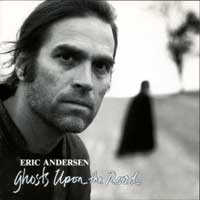 Schönes
Comebackalbum nach langen Jahren. Musikalisch und auch optisch hat sich
der Mann gut gehalten. Diese Platte wollte aber in den späten 80ern
kaum jemand hören. Der Mann war eben nicht mehr so hip wie in den
60ern. Mir gefällt's natürlich trotzdem (?). Schönes
Comebackalbum nach langen Jahren. Musikalisch und auch optisch hat sich
der Mann gut gehalten. Diese Platte wollte aber in den späten 80ern
kaum jemand hören. Der Mann war eben nicht mehr so hip wie in den
60ern. Mir gefällt's natürlich trotzdem (?). |
| A. R. Kane: "i" (Rough Trade, 1989) |
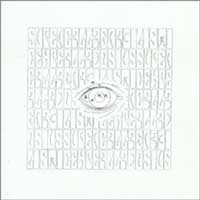 Wer
die Platte kennt wird sich vielleicht wundern, dass ich das mag, denn
irgendwie ist es ja wohl so was wie Dance Floor oder auch
Trip Hop. Oder auch nicht. Also eher nicht meine Baustelle.
Auf jeden Fall kommt dieser Musik zum großen Teil aus dem Computer,
obwohl scheinbar auch "richtige" Gitarren und sogar Streicher
dabei sind. Aber es klingt gut und die beiden Mitglieder dieses Duos
schreiben auf jeden Fall richtig gute Songs. Wenige Jahre später
hatten Bands wie Massive Attack oder Portishead mit ähnlicher
Musik mehr Erfolg... Wer
die Platte kennt wird sich vielleicht wundern, dass ich das mag, denn
irgendwie ist es ja wohl so was wie Dance Floor oder auch
Trip Hop. Oder auch nicht. Also eher nicht meine Baustelle.
Auf jeden Fall kommt dieser Musik zum großen Teil aus dem Computer,
obwohl scheinbar auch "richtige" Gitarren und sogar Streicher
dabei sind. Aber es klingt gut und die beiden Mitglieder dieses Duos
schreiben auf jeden Fall richtig gute Songs. Wenige Jahre später
hatten Bands wie Massive Attack oder Portishead mit ähnlicher
Musik mehr Erfolg...

 Mehr ...
Mehr ...
In retrospect, "i" now seems like a crystal ball prophesying virtually every major musical development of the 1990s; from the shimmering techno of "A Love from Outer Space" to the liquid dub of "What's All This Then?," from the alien drone-pop of "Conundrum" to the sinister shoegazer miasma of "Supervixens" -- it's all here, an underground road map for countless bands to follow. Breathtaking in its scope and positively epic in its ambitions, the album is loosely organized into four sonic suites containing four tracks each, broken up by a series of wild-card noise interludes; the music shifts and mutates constantly, growing progressively deeper and darker with each passing song. Largely overlooked upon its original release, "i" is still an underappreciated masterpiece, but it's inconceivable to imagine that electronica and post-rock could ever have blossomed without it.
Biography
Arguably the most criminally under-recognized band of their era, the British duo A.R. Kane anticipated virtually all of the key musical breakthroughs of the 1990s a decade before the fact, with the roots of everything from shoegazing to trip-hop to ambient dub -- even those of post-rock -- lying in their dreamy, oceanic sound. Formed in London in 1986, A.R. Kane were essentially the partnership of Alex Ayuli and Rudi Tambala; hailed in the press as "the black Jesus and Mary Chain" upon debuting the following year on One Little Indian with the single "When You're Sad," they moved to 4AD later in 1987 to release the follow-up EP Lollita, an impressively eclectic blend of gorgeous dream pop bliss and nightmarish squalls of feedback produced by the Cocteau Twins' Robin Guthrie.
While at 4AD, label chief Ivo Watts-Russell suggested that Ayuli and Tambala team with roster mates Martyn and Steven Young of Colourbox, champion mixer Chris "C.J." Mackintosh, and London DJ Dave Dorrell to record a single fusing the rhythms and beats of classic soul recordings with state-of-the-art electronics and production. Dubbing the collaboration M/A/R/R/S, the resulting single, "Pump Up the Volume" -- a breakthrough effort heralding sampling's gradual absorption from hip-hop into dance music and ultimately the pop mainstream -- soon topped the British charts, the first 4AD release ever to accomplish the feat. Plans for a M/A/R/R/S follow-up never materialized, however, and A.R. Kane again picked up stakes, moving on to Rough Trade to begin work on their much-anticipated full-length debut.
The resulting album, 1988's 69, fulfilled all the promise of A.R. Kane's earlier work and more; cosmic yet funky, its liquid grooves immersed in waves of ecstatic noise, the record's mastery of atmosphere and mood -- in tandem with its nearly formless songs -- establish it as a clear antecedent not only of the nascent shoegazer sound but also much of the underground dance music to emerge in the years to follow. The duo's double-LP follow-up, 1989's i, was even more impressive in its scope, breathlessly veering from melodic dance-pop to eerie drone-rock to epic dub mosaics. And then...nothing: only three years later did the next A.R. Kane LP, Americana -- a handful of new tracks combined with past highlights -- appear on the Luaka Bop label. By the time of a proper follow-up, 1994's New Clear Child, the moment had clearly passed.
(by Jason Ankeny, All Music Guide)
|
| Tim Buktu: "Livin' Like A Donkey Shot" (Rough Trade/HeartBeat, 1989) |
 Ich
kann mich leider nicht mehr so genau erinnern, wo und warum ich mir
diese Platte vor 20 Jahren gekauft habe - wahrscheinlich auf oder nach
einem Auftritt des Sängers und Multiinstrumentalisten aus Wuppertal
mit dem leicht bescheuerten Künstlernamen. Laut Wikipedia
heisst er mit bürgerlichem Namen Andreas Matthias Johannes
Kinzel geb. Müller-Eckhard, was es ihm sicherlich auch
nicht leichter gemacht hat in seinem Leben, und betreibt auch heute
noch ein Tonstudio in Wuppertal. Bloß Tonträger unter eigenem
Namen hat es anschliessend wohl keine weiteren gegeben. In jungen Jahren
soll er auch in der Band von Ivan Rebroff gespielt haben. Das
Outfit auf dem Cover könnte noch aus diesen Tagen stammen, zumindest
ohne die Zahnbürsten und Knochen in der Halskette. Auf jeden Fall
ist das eine gute Geschichte. Ich
kann mich leider nicht mehr so genau erinnern, wo und warum ich mir
diese Platte vor 20 Jahren gekauft habe - wahrscheinlich auf oder nach
einem Auftritt des Sängers und Multiinstrumentalisten aus Wuppertal
mit dem leicht bescheuerten Künstlernamen. Laut Wikipedia
heisst er mit bürgerlichem Namen Andreas Matthias Johannes
Kinzel geb. Müller-Eckhard, was es ihm sicherlich auch
nicht leichter gemacht hat in seinem Leben, und betreibt auch heute
noch ein Tonstudio in Wuppertal. Bloß Tonträger unter eigenem
Namen hat es anschliessend wohl keine weiteren gegeben. In jungen Jahren
soll er auch in der Band von Ivan Rebroff gespielt haben. Das
Outfit auf dem Cover könnte noch aus diesen Tagen stammen, zumindest
ohne die Zahnbürsten und Knochen in der Halskette. Auf jeden Fall
ist das eine gute Geschichte.
Die Musik? Witziger Rock mit witziger Gesangsstimme und guten Songs,
irgendwo zwischen Alternative Rock (so hiess das damals),
Folk und Blues, alles handgespielt von Andreas Kinzel bis auf
gelegentliche Hilfe von Kollegen und einem Kinderchor. Sowas könnte
heutzutage wahrscheinlich wieder als Freakfolk verkauft
werden (OK: vielleicht nicht gut verkauft, aber auf jeden
Fall angeboten und/oder einsortiert als
solcher. Eine schöne Platte, die bis auf vereinzelte Klangeffekte
überhaupt nicht nach den bösen 80ern klingt!
Ausserdem selten und bisher anscheinend nicht auf CD erschienen.
(21.04.2010) |
| Einstürzende Neubauten: "Haus Der Lüge" (Rough Trade/Some Bizarre, 1989) |
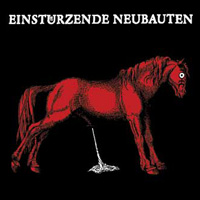 Keine Ahnung, ob das jetzt das beste Album der Band ist ... aber auf jeden
Fall mein erste Erwerbung, mein Einstieg in diesen genialen Krach, den
manche gar nimmermehr als Musik bezeichnen wollen ...
Keine Ahnung, ob das jetzt das beste Album der Band ist ... aber auf jeden
Fall mein erste Erwerbung, mein Einstieg in diesen genialen Krach, den
manche gar nimmermehr als Musik bezeichnen wollen ...
(01.04.2013) |
| House Of Freaks: "Tantilla" (Rhino, 1989) |
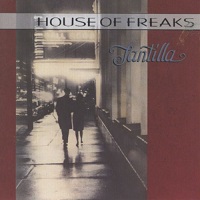 Ein grandioses Duo, bestehend nur aus einem Sänger/Gitarrist und einem Drummer und ohne Bassmann - wer hat's erfunden?
Weder die Schweizer noch die White Stripes! Das ist wohl eher ein Verdienst von Bryan Harvey und Johnny Hott!
Ein grandioses Duo, bestehend nur aus einem Sänger/Gitarrist und einem Drummer und ohne Bassmann - wer hat's erfunden?
Weder die Schweizer noch die White Stripes! Das ist wohl eher ein Verdienst von Bryan Harvey und Johnny Hott!
(15.03.2020)

 Mehr ...
Mehr ...
Folk and pop melodies drive this magnificent album from start to finish. The chorus to "Sun Gone Down" holds up against any great hook, from Nick Lowe to Tommy James. Tantilla is pure Southern Gothic, as subjects from religion to the Civil War are addressed and set to a roots music beat that is handy, tight pop/rock at the core. After so many years, this record has worn quite well.
(by Denise Sullivan, All Music Guide)
|
| Daniel Lanois: "Acadie" (Warner/Opal, 1989) |
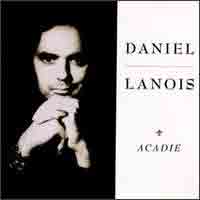 Diesen franko-kanadischen Sänger und Gitarristen kennt man sonst
eigentlich "nur" zusammen mit Brian Eno als U2-Produzenten.
Wer aber inzwischen meinen Musikgeschmack kennt, der weiß, dass diese
Platte nicht deshalb hier steht (wäre sogar -ehrlich gesagt- eher
Grund, es zu lassen), sondern weil Lanois ein Händchen für
schöne Songs und Melodien hat und ein wunderbarer Dobrospieler
ist! OK, manchmal bricht es auch bei ihm mit den verechoten U2-Rythmen
durch, aber es lässt sich gut aushalten, weil Bono dann
eben doch nicht singt.
Diesen franko-kanadischen Sänger und Gitarristen kennt man sonst
eigentlich "nur" zusammen mit Brian Eno als U2-Produzenten.
Wer aber inzwischen meinen Musikgeschmack kennt, der weiß, dass diese
Platte nicht deshalb hier steht (wäre sogar -ehrlich gesagt- eher
Grund, es zu lassen), sondern weil Lanois ein Händchen für
schöne Songs und Melodien hat und ein wunderbarer Dobrospieler
ist! OK, manchmal bricht es auch bei ihm mit den verechoten U2-Rythmen
durch, aber es lässt sich gut aushalten, weil Bono dann
eben doch nicht singt.

 Mehr ...
Mehr ...
| "This stunning debut album by an artist that had hitherto
been known only as a producer is priceless, and stands up well to repeated
listening. It is a blend of New Orleans rhythm, rock, new age mysticism,
and folk. It is not mushy but it is as caressing to the ear as to the mind.
It has the very distinctive ethereal sound of the albums he produced for
among others the Neville Brothers and Robbie Robertson. All the songs with
the exception of the traditional "Amazing Grace," done in an untraditional
manner (sung by Aaron Neville) are written or co-written by Lanois. The
songs affect a rural and uncomplicated yet very complete and full sound
that brings the listener into their mood, swing into the full lilting joy
of "Under a Stormy Sky," to the haunting and ominous "Where
the Hawkwind Kills." His sound is a distinctive signature, that holds
well with each different song and with each artist for whom he has fashioned
albums." (Bob Gottlieb, All Music Guide) |
|
| Live Skull: "Positraction" (What Goes On, 1989) |
 Ein krachige Gitarrenband aus New York, die gerne mit Sonic
Youth verglichen wurde, mit ihrem letzten Album. Die ist gleichzeitig
die erste CD, auf deren Cover ich den Namen der Sängerin und Gitarristin
Thalia Zedek aus Boston lesen konnte, die anschließend mit Chris
Brokaw in ihrer Heimatstadt die erfolgreichere Band Come
gründete und später mit der Thalia Zedek
Band einen gewissen Kultstaus erlangte. Aus dieser "historischen"
Perspektive betrachtet klingt "Positraction" auch gar nicht
so sehr nach Sonic Youth, sondern
eben nach Thalia Zedek.
Ein krachige Gitarrenband aus New York, die gerne mit Sonic
Youth verglichen wurde, mit ihrem letzten Album. Die ist gleichzeitig
die erste CD, auf deren Cover ich den Namen der Sängerin und Gitarristin
Thalia Zedek aus Boston lesen konnte, die anschließend mit Chris
Brokaw in ihrer Heimatstadt die erfolgreichere Band Come
gründete und später mit der Thalia Zedek
Band einen gewissen Kultstaus erlangte. Aus dieser "historischen"
Perspektive betrachtet klingt "Positraction" auch gar nicht
so sehr nach Sonic Youth, sondern
eben nach Thalia Zedek.
(07.06.2009)

 Mehr ...
Mehr ...
The final Live Skull album showed that the quintet didn't merely go down fighting, but outright brawling, able to suggest everything from punk antecedents to, oddly enough, U2 dedicated to the art of rampage. That may sound a strange comparison, but the advantage is that Zedek sounds nothing like Bono, and, more to the point, the band suggests a variety of early-80s U.K. post-punk riffers (Gene Loves Jezebel, Siouxsie and the Banshees, even early Cult) without sounding like a goth band per se. There's very much the same sense of bright, hyper-trebly guitar slashing through the mix, semi-tribal rhythm rumble, and more adding to this sense of dramatic darkness, with Zedek's singing making for the unexpected twist, not conventionally goth in its husky appeal. The result spikes up "Sunday Afternoon Whiteout" and "Safe From Me," to name two songs, with an energy that steers away from many indie rock groups of its time. The Birthday Party might be the best comparison, to an extent � Zedek does have something of Nick Cave about her, though not entirely, while the band itself doesn't quite show the Australians' full range. But the energy and dark beauty is all there, infusing even the calmer moments like "Riches House" with a slightly twisted blues/cabaret feel. Live Skull keeps its own individual flair, though, resulting in sometimes quite beautiful numbers as "Amputeased," which could almost be their version of a ballad and which helps forecast, a little bit, where Zedek would go with Come in future. That the group keeps the songs fairly short and compact is to its advantage; not a note feels wasted, and the quintet does a great job at setting up the atmosphere of a song and then carrying it through. CD versions of Positraction include Snuffer as a bonus.
(by Ned Raggett, All Music Guide)
|
| M. Walking On The Water: "Pluto" (Fuego, 1989) |
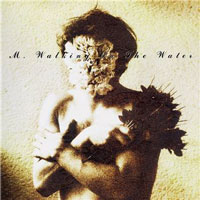 In der Grabbelkiste wiederentdeckt!
In der Grabbelkiste wiederentdeckt!
(31.12.2010)

 Mehr ...
Mehr ...
Short-Distance-Psycho-Folk - das ist die selbstgew�hlte Nische der Krefelder Gruppe, die melodienverliebt und verschmitzt die Grenzen zwischen Walzer und Punk aufhebt, Akkordeon, Musikba� und Heavy-Metal- Gitarre eintr�chtig nebeneinander existieren l��t: Die quirlige Kollektion aus elf Songs ist ein unkonventionelles Pl�doyer f�r das reine Vergn�gen an der Musik.
(� Audio)
Sie wandeln stilsicher �ber die Pop-Gew�sser: M. Walking On The Water legen mit ihrem zweiten Album ein au�ergew�hnlich vielschichtiges Werk vor. Markus Maria Jansen, Mike Pelzer, Ulrich Kisters und J�rgen J�hnke behaupten sich nicht nur im Kielwasser britischer Gitarrenbands ("Love"), sondern liegen auch mit der fast schon klassischen Ballade "Day To Day" oder dem akkoreonverzierten "Anymore" gut im Wind. Und Sinn f�r Astrologie haben die Ruhrpott-Rocker obendrein: Das atmosph�rische Titelst�ck widmeten sie dem Planeten Pluto, der 248 Jahre ben�tigt, um die Sonne zu umkreisen. Solange kann's bis zum Durchbruch von M. Walking On The Water kaum dauern. ** Interpret.: 06-09 ** Klang.: 07-08
(� Stereoplay)
|
| The Perfect Disaster: "Up" (Rough Trade/Fire, 1989) |

Ich liebe es, wenn - fast schicksalhaft - ein Zufallsschritt auf den
anderen folgt. Vor wenigen Tagen habe ich in der LP-Grabbelkiste das
titellose Debütalbum dieser völlig vergessenen englischen
Band aus den 80ern um den Sänger und Saxofonisten Philip Parfitt
gefunden. Da habe ich natürlich an "Up" gedacht, dem
dritten Album der Band, das ich mir damals, noch zu D-Mark-Zeiten,
neu auf Vinyl gekauft hatte. Während das mir bisher unbekannte
erste Album noch etwas unentschlossen klingt und mit einer schönen
Coverversion von Lou Reeds "Over You" ( gibt's nach
meinem Wissensstand ansonsten nur auf dem posthumen Velvet Underground-Livealbum
"1969") aufwartete,
zeigt sich mir "Up", erstmalig seit vielen Jahren aufgelegt,
als Glanzlicht des britischen Gitarrenrocks der späten 80er,
das bisher zu Unrecht in meiner Jahresliste vergessen wurde! Außerdem
hatte Parfitt auf "Up" sein Saxofon aus der Hand gelegt
und zur Rhythmusgitarre gewechselt (witzigerweise zeitgleich mit mir:
auch ich hatte damals bei den Rusty Nails mein Saxofon eingemottet,
was auch der Nägeln gut getan hatte!).
Bei der Suche nach einer schönen Abbildung des Covers bin ich
jetzt auf die Ankündigung von Philip Parfitts spätem
Solodebüt gestossen, das im kommenden April 2014 veröffentlicht
wird. Die auf seiner Bandcamp-Seite
herunterladbaren MP3s lassen auf wunderschönes Album hoffen ...
(11.03.2014)
"I'm Not The Man I Used To Be" ist da und ganz wunderbar!
(04.04.2014)

 Mehr ...
Mehr ...
The album is probably called Up because three tracks are titled "Down." The sound is engagingly Velvet Underground-like, with a tendency toward long numbers built around a train-on-a-run rhythm that click along until they stop, as does the epic "B52," which comes across as a great club number -- the guitars chug along, the bass weaves in and out, and the drummer ticks along like a metronome. Vocalist/guitarist Phil Parfitt doesn't have quite as tuneless a voice as Lou Reed, mind you, which is probably to the good. Overall, it's a nifty piece of work, varying between thoughtful acoustic pieces and chugging rock & roll -- the three "Down" variations are good stuff, while "B52" and "Time to Kill" stand out very well, the former for its hypnotic rhythm and repeated refrain of "Go Bo Diddley/Go home," the latter for being a grand old-fashioned club rocker. This is one of those albums that winds up getting serious repeat plays.
(by Steven MacDonald, All Music Guide)
|
| Neil Young: "Eldorado" (Reprise, Apr. 1989) |
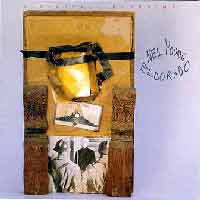 "Eldorado" war als allein in Japan und Australien veröffentlichte EP nur das
Vorspiel zum grandiosen Comeback "Freedom",
das Mr. Young nach den müden und verwirrenden Veröffentlichungen
in den 80ern zurück an die Spitze brachte.
"Eldorado" war als allein in Japan und Australien veröffentlichte EP nur das
Vorspiel zum grandiosen Comeback "Freedom",
das Mr. Young nach den müden und verwirrenden Veröffentlichungen
in den 80ern zurück an die Spitze brachte.

 Mehr ...
Mehr ...
Im April 1989 veröffentlichte Neil Young in Japan und Australien das 5-Track-Mini-Album »Eldorado« auf CD unter dem Namen »Neil Young and the Restless«. Neil (Gitarre und Gesang) wurde von Rick Rosas am Bass und Chad Cromwell am Schlagzeug unterstützt, und sein langjähriger Crazy Horse-Bandkollege Frank »Poncho« Sampedro steuerte die Gitarre zum Titeltrack bei. Die »Eldorado« EP ist voll von wilder Verzerrung und erdigem Crunch.
|
 weitere Highlights ...
weitere Highlights ... Nach
einigen eher ruhigen Jahren ein grandioses Comeback! Zwar sind es wiedermal
die sehr guten Songs aus der Feder von Onkel Lou, die überzeugen,
trotzdem steht eher die Band mit ihren Sound im Mittelpunkt: 2 Gitarren
(Reed und Mike Rathke), ein Bass (Rob Wasserman am elektrischen
Kontrabass) und ein Schlagzeug (Fred Maher).
"YOU CAN'T BEAT 2 GUITARS, BASS, DRUM." heißt
es so schön in den Linernotes. Dazu kommen sporadische Gäste:
Sänger Dion und - ein wunderbare Sache - die alte Velvet
Underground-Trommlerin Moe Tucker!
Nach
einigen eher ruhigen Jahren ein grandioses Comeback! Zwar sind es wiedermal
die sehr guten Songs aus der Feder von Onkel Lou, die überzeugen,
trotzdem steht eher die Band mit ihren Sound im Mittelpunkt: 2 Gitarren
(Reed und Mike Rathke), ein Bass (Rob Wasserman am elektrischen
Kontrabass) und ein Schlagzeug (Fred Maher).
"YOU CAN'T BEAT 2 GUITARS, BASS, DRUM." heißt
es so schön in den Linernotes. Dazu kommen sporadische Gäste:
Sänger Dion und - ein wunderbare Sache - die alte Velvet
Underground-Trommlerin Moe Tucker!
 Mehr ...
Mehr ...
 Die
Triffids sind für mich - nach den Go-Betweens
- ganz klar meine liebste Band aus Australien. Entdeckt hatte ich sie
Anfang 1987 (zeitgleich mit den Go-Betweens!)
durch die bezaubernde, aber unterbewertete Scheunensession "In
The Pines" (1986) und das grandiose Majordebüt "Calenture"
(1987) . Als dann "The Black Swan" herauskam war ich zuerst
etwas enttäuscht, weil auf dem Album viel mit Drumcomputern gearbeitet
wird und sich beim ersten Hören kein Ohrwurm der Güte von "Raining
Pleasure", "Wide Open Road" oder "Bury Me Deep In
Love" finden lässt. Trotzdem ist das ein tolles Album mit tollen
Songs von David McComb, leider auch
das letzte Album der Band: der Schwanengesang sozusagen.
Die
Triffids sind für mich - nach den Go-Betweens
- ganz klar meine liebste Band aus Australien. Entdeckt hatte ich sie
Anfang 1987 (zeitgleich mit den Go-Betweens!)
durch die bezaubernde, aber unterbewertete Scheunensession "In
The Pines" (1986) und das grandiose Majordebüt "Calenture"
(1987) . Als dann "The Black Swan" herauskam war ich zuerst
etwas enttäuscht, weil auf dem Album viel mit Drumcomputern gearbeitet
wird und sich beim ersten Hören kein Ohrwurm der Güte von "Raining
Pleasure", "Wide Open Road" oder "Bury Me Deep In
Love" finden lässt. Trotzdem ist das ein tolles Album mit tollen
Songs von David McComb, leider auch
das letzte Album der Band: der Schwanengesang sozusagen.
 Das
erste beeindruckende Werk der Sängerin und Songschreiberin nach
zwei puristischen Folkbluesalben in den frühen 80ern. Man kann
das vielleicht ganz gut daran erkennen, welche Songs der Platte später
von anderen Künstlern gecovert wurden: natürlich "Passionate
Kisses", womit Mary-Chapin Carpenter die Country-Charts
stürmte, aber auch "Changed The Locks" (Silos),
"Crescent City" (Emmylou Harris), "Side
Of The Road" (The Schramms und auch Waiting For Louise!),
"Price To Pay" (Prairie Oyster aus Kanada) und "Something
About What Happens When We Talk" (Baby You Know aus Niederbayern).
Das
erste beeindruckende Werk der Sängerin und Songschreiberin nach
zwei puristischen Folkbluesalben in den frühen 80ern. Man kann
das vielleicht ganz gut daran erkennen, welche Songs der Platte später
von anderen Künstlern gecovert wurden: natürlich "Passionate
Kisses", womit Mary-Chapin Carpenter die Country-Charts
stürmte, aber auch "Changed The Locks" (Silos),
"Crescent City" (Emmylou Harris), "Side
Of The Road" (The Schramms und auch Waiting For Louise!),
"Price To Pay" (Prairie Oyster aus Kanada) und "Something
About What Happens When We Talk" (Baby You Know aus Niederbayern). Far
removed from Blood & Chocolate, Spike was released to rave reviews
and was Elvis' most successful album since Punch The Clock.
Far
removed from Blood & Chocolate, Spike was released to rave reviews
and was Elvis' most successful album since Punch The Clock.

 Mehr ...
Mehr ...

 Mehr ...
Mehr ...
 Bereits
im Herbst 1987 entstandener Konzertmitschnitt der akustischen Variante
von Garcias Hobbyband, zu der sein Kumpel aus alten Bluesgrasstagen
Sandy Rothman (dobro, mandoline), der Gitarrist David Nelson
von den New Riders Of The Purple Sage
und Jerrys Stammbassist John Kahn gehören. Unterstützt
werden sie von Kenny Kosek an der Geige und David Kemper
an der Trommel. Geboten werden Folksongs und Spirituals, aber auch eine
Dead-Nummern ("Ripple"). Besonders schön gelingt der
alte Heuler "Swing Low, Sweet Chariot", den ich nach meine
erschütternden CVJM-Erfahrungen in der Jugend eigentlich für
unspielbar hielt.
Bereits
im Herbst 1987 entstandener Konzertmitschnitt der akustischen Variante
von Garcias Hobbyband, zu der sein Kumpel aus alten Bluesgrasstagen
Sandy Rothman (dobro, mandoline), der Gitarrist David Nelson
von den New Riders Of The Purple Sage
und Jerrys Stammbassist John Kahn gehören. Unterstützt
werden sie von Kenny Kosek an der Geige und David Kemper
an der Trommel. Geboten werden Folksongs und Spirituals, aber auch eine
Dead-Nummern ("Ripple"). Besonders schön gelingt der
alte Heuler "Swing Low, Sweet Chariot", den ich nach meine
erschütternden CVJM-Erfahrungen in der Jugend eigentlich für
unspielbar hielt. Live
war die Band um die 4 Brüder Art (Gesang & Orgel, Ex-Meters),
Aaron ("THE VOICE"), Cyril (Gesang & Perkussion)
und Charles (Saxofon) schon immer der Oberhammer - und endlich
haben sie es geschafft, diese Qualität auch im Studio umzusetzen.
Dabei war die Hilfe von Produzent Daniel Lanois sicherlich wichtig.
Im Gegensatz zum schwachen Vorgängeralbum "Uptown" wurde
hier nicht einfach versucht, ein weiteres durchschnittliches Mainstreamalbum
aufzunehmen.
Live
war die Band um die 4 Brüder Art (Gesang & Orgel, Ex-Meters),
Aaron ("THE VOICE"), Cyril (Gesang & Perkussion)
und Charles (Saxofon) schon immer der Oberhammer - und endlich
haben sie es geschafft, diese Qualität auch im Studio umzusetzen.
Dabei war die Hilfe von Produzent Daniel Lanois sicherlich wichtig.
Im Gegensatz zum schwachen Vorgängeralbum "Uptown" wurde
hier nicht einfach versucht, ein weiteres durchschnittliches Mainstreamalbum
aufzunehmen.  Bereits
das 2. Soloalbum des Ex-Plimsouls-Sängers mit einem genialen
Titel, aber meine erste Begegnung mit dem Mann. Tolle Songs und interessante
musikalische Gäste, z.B. Ry Cooder, David Lindley,
Jim Keltner, sowie Leuten von Los Lobos und Tom Petty's
Heartbreakers machen diese Platte zu einem Highlight in seiner "Karriere".
Anspieltipps: "Travelin' Light," "Two Angels," und
"Put Down the Gun".
Bereits
das 2. Soloalbum des Ex-Plimsouls-Sängers mit einem genialen
Titel, aber meine erste Begegnung mit dem Mann. Tolle Songs und interessante
musikalische Gäste, z.B. Ry Cooder, David Lindley,
Jim Keltner, sowie Leuten von Los Lobos und Tom Petty's
Heartbreakers machen diese Platte zu einem Highlight in seiner "Karriere".
Anspieltipps: "Travelin' Light," "Two Angels," und
"Put Down the Gun".  Mehr ...
Mehr ...
 Ein
schönes Comeback nach einer langen Durststrecke für eine der
besten Bottleneckgitarristinnen und dazu erstklassigen Sängerin.
Das Werk ist zwar sehr "mainstreamig" geworden, aber dank
guter Songs (z.B. ihr eigener "Nick Of Time" und John Hiatts
"Thing Called Love") und guter Band (Ex-Copperhead-Sänger
Hutch Hutchinson am Bass und Ex-Beach-Boy-zur-Holland-Phase
Ricky Fataar am Schlagzeug) trotzdem gelungen. Und zum ersten
mal wurde das auch vom Platten kaufenden Publikum erkannt! Warum auch
nicht? Die Folgealben waren dann allerdings ähnlich gestrickt,
aber leider nicht von gleicher Klasse.
Ein
schönes Comeback nach einer langen Durststrecke für eine der
besten Bottleneckgitarristinnen und dazu erstklassigen Sängerin.
Das Werk ist zwar sehr "mainstreamig" geworden, aber dank
guter Songs (z.B. ihr eigener "Nick Of Time" und John Hiatts
"Thing Called Love") und guter Band (Ex-Copperhead-Sänger
Hutch Hutchinson am Bass und Ex-Beach-Boy-zur-Holland-Phase
Ricky Fataar am Schlagzeug) trotzdem gelungen. Und zum ersten
mal wurde das auch vom Platten kaufenden Publikum erkannt! Warum auch
nicht? Die Folgealben waren dann allerdings ähnlich gestrickt,
aber leider nicht von gleicher Klasse.
 Mehr ...
Mehr ...
 Ehemaliger irscher (Punk?)-Sänger macht auf Kunstgewerbe? Für
viele Fans seiner alten Band Virgin Prunes
war das sicherlich Verrat. Für alle anderen: eine gute Singer/Songwriter-Platte
in der Tom Waits-Tradition. Dafür sorgen Produzentenlegende Hal
Wilner und seine New-Yorker Musiker: die Gitarristen Bill Frisell
und Marc Ribot, Michael Blair am Schlagzeug und Fernando
Saunders am Bass. Als Chor hören wir Mark Volman und
Howard Kaylan, besser bekannt als Flo & Eddie, die
ehemaligen Sänger der Turtles und bei Zappa und T.Rex.
Am Piano sitzt "The Man Seezer", der sogar auf
dem Plattencover besonders gefeatured wird, mir aber ansonsten völlig
unbekannt ist. Gerüchteweise soll Gavin Friday das Album selber
nicht (mehr) mögen. Mir egal.
Ehemaliger irscher (Punk?)-Sänger macht auf Kunstgewerbe? Für
viele Fans seiner alten Band Virgin Prunes
war das sicherlich Verrat. Für alle anderen: eine gute Singer/Songwriter-Platte
in der Tom Waits-Tradition. Dafür sorgen Produzentenlegende Hal
Wilner und seine New-Yorker Musiker: die Gitarristen Bill Frisell
und Marc Ribot, Michael Blair am Schlagzeug und Fernando
Saunders am Bass. Als Chor hören wir Mark Volman und
Howard Kaylan, besser bekannt als Flo & Eddie, die
ehemaligen Sänger der Turtles und bei Zappa und T.Rex.
Am Piano sitzt "The Man Seezer", der sogar auf
dem Plattencover besonders gefeatured wird, mir aber ansonsten völlig
unbekannt ist. Gerüchteweise soll Gavin Friday das Album selber
nicht (mehr) mögen. Mir egal.
 Mehr ...
Mehr ...
 Dieses
ist sicherlich eines der kommerziellsten Album der Avantgardeband um
den Sänger David Thomas - und wird von den Hardcore-Fans
auch nicht wirklich geliebt. Es ist aber mein persönlicher Einstieg
in den Pere-Ubu-Kosmos und hat mit "Waiting For Mary" einen
richtigen Ohrwurm, der in einer besseren Welt ein Hit geworden wäre.
Dieses
ist sicherlich eines der kommerziellsten Album der Avantgardeband um
den Sänger David Thomas - und wird von den Hardcore-Fans
auch nicht wirklich geliebt. Es ist aber mein persönlicher Einstieg
in den Pere-Ubu-Kosmos und hat mit "Waiting For Mary" einen
richtigen Ohrwurm, der in einer besseren Welt ein Hit geworden wäre. Das
Solodebüt der ehemaligen Sängerin von Lone
Justice. Eine wunderbar altmodisch klingende Platte, die von der
Orgel ihres aus den Lone Justice-Tagen
übrig gebliebenen Mitspielers Bruce Brody getragen wird.
Außerdem lenkt das Coverfoto sicherlich eher davon ab, dass Maria McKee
eine großartige Sängerin und Songschreiberin ist und keine dumpfe
Singmaus. Neben den erwähnten eigenen Klassesongs (z.B. "I've
Forgotten What It Was In You", "To Miss Someone", "Panic
Beach" oder "This Property Is Condemned") gibt es auch
die überraschende Coverversion der alten Richard
& Linda Thompson-Nummer "Has He Got A Friend For Me".
Richard Thompson ist auch mit einigen seiner genialen Gitarrensoli
dabei, Jim Keltner trommelt grandios und Mitchell Froom
liefert eine saubere Produktionsarbeit.
Das
Solodebüt der ehemaligen Sängerin von Lone
Justice. Eine wunderbar altmodisch klingende Platte, die von der
Orgel ihres aus den Lone Justice-Tagen
übrig gebliebenen Mitspielers Bruce Brody getragen wird.
Außerdem lenkt das Coverfoto sicherlich eher davon ab, dass Maria McKee
eine großartige Sängerin und Songschreiberin ist und keine dumpfe
Singmaus. Neben den erwähnten eigenen Klassesongs (z.B. "I've
Forgotten What It Was In You", "To Miss Someone", "Panic
Beach" oder "This Property Is Condemned") gibt es auch
die überraschende Coverversion der alten Richard
& Linda Thompson-Nummer "Has He Got A Friend For Me".
Richard Thompson ist auch mit einigen seiner genialen Gitarrensoli
dabei, Jim Keltner trommelt grandios und Mitchell Froom
liefert eine saubere Produktionsarbeit. Ein
australischen Quartett um den Sänger Rob Younger (Ex-Radio
Birdman) und den Gitarristen Charlie Owen. Harter Rock, aber
trotzdem (und Gott sei Dank) kein Punk oder Metall! Im Sound am ehesten
noch mit den Stooges oder den MC5
zu vergleichen
Ein
australischen Quartett um den Sänger Rob Younger (Ex-Radio
Birdman) und den Gitarristen Charlie Owen. Harter Rock, aber
trotzdem (und Gott sei Dank) kein Punk oder Metall! Im Sound am ehesten
noch mit den Stooges oder den MC5
zu vergleichen Das zweite Album - nicht wie viele glauben, das erste (4 Jahre zuvor
erschien das titellose Debütalbum)
- und endlich der große Durchbruch der schottischen Band um den Sänger,
Bassisten und Songschreiber Justin Currie und den Gitarristen
Iain Harvey, nicht zuletzt deshalb, weil es diesesmal gleich
4 Singlehits gibt: natürlich das bekannte "Nothing Ever Happens",
aber auch "Kiss This Thing Goodbye", "Stone Cold Sober"
und "Move Away Jimmy Blue".
Das zweite Album - nicht wie viele glauben, das erste (4 Jahre zuvor
erschien das titellose Debütalbum)
- und endlich der große Durchbruch der schottischen Band um den Sänger,
Bassisten und Songschreiber Justin Currie und den Gitarristen
Iain Harvey, nicht zuletzt deshalb, weil es diesesmal gleich
4 Singlehits gibt: natürlich das bekannte "Nothing Ever Happens",
aber auch "Kiss This Thing Goodbye", "Stone Cold Sober"
und "Move Away Jimmy Blue".
 Mehr ...
Mehr ...
 Klassedebüt
der beiden Sängerinnen und Songschreiberinnen Emily Saliers
und Amy Ray, produziert von Scott Litt, der schon für
R.E.M. die Alben "Document"
(1987) und "Green" (1988)
betreut hatte und auch seine berühmten Arbeitgeber komplett ins
Studio einladen konnte. Ebenfalls dabei die fast kompletten Hothouse
Flowers aus Irland und deren Landsmann Luka Bloom. Schöne
Platte. Mit "Closer To Fine" ist sogar direkt ein echer Hit
dabei.
Klassedebüt
der beiden Sängerinnen und Songschreiberinnen Emily Saliers
und Amy Ray, produziert von Scott Litt, der schon für
R.E.M. die Alben "Document"
(1987) und "Green" (1988)
betreut hatte und auch seine berühmten Arbeitgeber komplett ins
Studio einladen konnte. Ebenfalls dabei die fast kompletten Hothouse
Flowers aus Irland und deren Landsmann Luka Bloom. Schöne
Platte. Mit "Closer To Fine" ist sogar direkt ein echer Hit
dabei. Nach dem Punkrock von Hüsker Dü
hier das stärker akustisch orientierte Solodebüt. Mit Anton
Fier (dr) und Tony Maimone (bg) stand Mould eine virtuose
Rhythmusgruppe zur Verfügung, die aber Gott sei Dank nicht "muckermäßig"
klang. Das Glanzlicht des Albums ist allerdings das omnipräsente
Cello von Jane Scarpantoni.
Nach dem Punkrock von Hüsker Dü
hier das stärker akustisch orientierte Solodebüt. Mit Anton
Fier (dr) und Tony Maimone (bg) stand Mould eine virtuose
Rhythmusgruppe zur Verfügung, die aber Gott sei Dank nicht "muckermäßig"
klang. Das Glanzlicht des Albums ist allerdings das omnipräsente
Cello von Jane Scarpantoni.
 Mehr ...
Mehr ...
 Eine
deutsche Band aus dem Dortmunder Vorort Waltrop benennt sich nach einem
eher unbekannten Velvet Underground-Song und spielt eine wunderbare
Gitarrenmusik, die amerikanischer klingt als viele amerikanische Produktionen!
Vielleicht kann man im Westfälischen die großen Weiten der US of
A besser nachempfinden als anderswo? Ist ja auch völlig egal, denn
wir haben hier eine Klasseband (mit den singenden und Gitarre spielenden
Brüdern Klaus und Bernd Uebelhöde) und guten
Songs. Die Platte war '89 sogar in den Jahrescharts vom Musikexpress,
trotzdem hat's nicht für die große Karriere gereicht. Rockstars
heißen eben nicht Uebelhöde und kommen nicht aus
Waltrop.
Eine
deutsche Band aus dem Dortmunder Vorort Waltrop benennt sich nach einem
eher unbekannten Velvet Underground-Song und spielt eine wunderbare
Gitarrenmusik, die amerikanischer klingt als viele amerikanische Produktionen!
Vielleicht kann man im Westfälischen die großen Weiten der US of
A besser nachempfinden als anderswo? Ist ja auch völlig egal, denn
wir haben hier eine Klasseband (mit den singenden und Gitarre spielenden
Brüdern Klaus und Bernd Uebelhöde) und guten
Songs. Die Platte war '89 sogar in den Jahrescharts vom Musikexpress,
trotzdem hat's nicht für die große Karriere gereicht. Rockstars
heißen eben nicht Uebelhöde und kommen nicht aus
Waltrop. Die
letzte Platte dieser genialen Witzbolde war ihre beste. Danach trennten
sich die Wege. Sänger David Lowery wurde mit Cracker
kommerziell etwas erfolgreicher, die anderen trieben die schrägen
Elemente ihrer Musik (natürlich jetzt ganz ohne kommerziellen Erfolg)
unter dem Namen "Monks Of Doom" weiter.
Die
letzte Platte dieser genialen Witzbolde war ihre beste. Danach trennten
sich die Wege. Sänger David Lowery wurde mit Cracker
kommerziell etwas erfolgreicher, die anderen trieben die schrägen
Elemente ihrer Musik (natürlich jetzt ganz ohne kommerziellen Erfolg)
unter dem Namen "Monks Of Doom" weiter.
 Mehr ...
Mehr ...
 Nach
langer Durststrecke ("Knocked Out Loaded" von 86 und "Down
In The Groove" von 88 waren schon ziemlich schlappe Angelegenheiten)
verhalf Daniel Lanois his Bobness endlich wieder zu einem Big
Point! Dafür sorgten u.a. Cyril Neville, Brian Stolz,
Willie Green und Tony Hall von den Neville Brothers, die
ja auch gerade erst mit dem Kanadier Lanois das superbe "Yellow
Moon" aufgenommen hatten. Das alles wäre aber nichts ohne
diese wunderbaren Lieder: "Man In A Long Black Coat", "Most
Of The Time" , "What Was It You Wanted?" u. a.
Nach
langer Durststrecke ("Knocked Out Loaded" von 86 und "Down
In The Groove" von 88 waren schon ziemlich schlappe Angelegenheiten)
verhalf Daniel Lanois his Bobness endlich wieder zu einem Big
Point! Dafür sorgten u.a. Cyril Neville, Brian Stolz,
Willie Green und Tony Hall von den Neville Brothers, die
ja auch gerade erst mit dem Kanadier Lanois das superbe "Yellow
Moon" aufgenommen hatten. Das alles wäre aber nichts ohne
diese wunderbaren Lieder: "Man In A Long Black Coat", "Most
Of The Time" , "What Was It You Wanted?" u. a. Rickie Zusammenarbeit mit Walter Becker ist damals leider etwas
untergegangen. Nach Gaucho (von
1980) nach meiner Kenntnis auch das einzige Lebenszeichen des Ex-Steely
Dan Gitarristen und Bassisten in den 80ern.
Rickie Zusammenarbeit mit Walter Becker ist damals leider etwas
untergegangen. Nach Gaucho (von
1980) nach meiner Kenntnis auch das einzige Lebenszeichen des Ex-Steely
Dan Gitarristen und Bassisten in den 80ern.
 Mehr ...
Mehr ...
 Das
Debüt des älteren Bruders der Schauspieler Sean Penn und Christopher
Penn. Ein vorzügliches Singer/Songwriter-Album in der Spielklasse
von Matthew Sweet und seiner
zukünftigen Ehefrau Aimee Mann.
Das
Debüt des älteren Bruders der Schauspieler Sean Penn und Christopher
Penn. Ein vorzügliches Singer/Songwriter-Album in der Spielklasse
von Matthew Sweet und seiner
zukünftigen Ehefrau Aimee Mann. Solodebüt des Ex-Green On Red-Keyboarders,
allerdings vornehmlich als Sänger, Songschreiber und Gitarrist:
alles Talente, die er bei Green On Red kaum oder gar nicht nutzen konnte.
Gleichzeitig ist das Album mehr oder weniger der Start des San Francisco-Labels
Heyday von Pat Thomas, dem ehemaligen Absolute Grey-Drummer,
der uns danach auch noch mit Penelope
Houston, Sonya Hunter und anderen wunderbaren Platten beglückte.
Die Begleitband war eine kleine Supergruppe von Semi-Legenden: Drummer
Keith Mitchell spielte ebenfalls in einer frühen Green
On Red-Besetzung und danach mit David Roback bei Opal,
danach auch in deren Nachfolgeband Mazzy
Star. Bassist Mark Walton kam vom Dream Syndicate
und gründete später die Continental
Drifters. Leadgitarrist John Thoman spielte mit den Roback-Brüdern
bei Rain Parade und gründete
später mit Steve Roback die Band Viva Saturn. Gastauftritte
haben Bassist Tom Stevens von den Long
Ryders, Johnette Napolitano von Concrete
Blonde und Robert Lloyd (an Piano und Mandoline). Produziert
hat Steve Wynn, der ehemalige Sänger von Dream
Syndicate. Damit hätten wir einen groben Überblick mit
allen wichtigen Bands des "Paisley Undergrounds" getan, der
damals in den frühen 80ern mit seinem Byrds-, Stooges- oder Velvet
Underground- beeinflussten Gitarrenrock der einzige Lichtblick in einer
dunklen Phase der Rockmusik war.
Solodebüt des Ex-Green On Red-Keyboarders,
allerdings vornehmlich als Sänger, Songschreiber und Gitarrist:
alles Talente, die er bei Green On Red kaum oder gar nicht nutzen konnte.
Gleichzeitig ist das Album mehr oder weniger der Start des San Francisco-Labels
Heyday von Pat Thomas, dem ehemaligen Absolute Grey-Drummer,
der uns danach auch noch mit Penelope
Houston, Sonya Hunter und anderen wunderbaren Platten beglückte.
Die Begleitband war eine kleine Supergruppe von Semi-Legenden: Drummer
Keith Mitchell spielte ebenfalls in einer frühen Green
On Red-Besetzung und danach mit David Roback bei Opal,
danach auch in deren Nachfolgeband Mazzy
Star. Bassist Mark Walton kam vom Dream Syndicate
und gründete später die Continental
Drifters. Leadgitarrist John Thoman spielte mit den Roback-Brüdern
bei Rain Parade und gründete
später mit Steve Roback die Band Viva Saturn. Gastauftritte
haben Bassist Tom Stevens von den Long
Ryders, Johnette Napolitano von Concrete
Blonde und Robert Lloyd (an Piano und Mandoline). Produziert
hat Steve Wynn, der ehemalige Sänger von Dream
Syndicate. Damit hätten wir einen groben Überblick mit
allen wichtigen Bands des "Paisley Undergrounds" getan, der
damals in den frühen 80ern mit seinem Byrds-, Stooges- oder Velvet
Underground- beeinflussten Gitarrenrock der einzige Lichtblick in einer
dunklen Phase der Rockmusik war.
 Mehr ...
Mehr ...
 Sänger
Dave Graney und Trommlerin Clare Moore stammen aus Australien
und spielten zuvor bei den Moodists.
Während diese noch ziemlich krachigen Bluesrock mit monotonen Bass-
und Gitarrenriffs zelebrierten gibt es hier jetzt Countryrock mit vielen
kleinen Ecken und Kanten, ganz so wie ich ihn mag. Bei den drei Coverversionen
beweist Graney dann ganz großen Geschmack: "The
Dolphins" von Fred Neil (das aber viele wohl nur durch
Tim Buckleys Version kennen, "Brass
Buttons" von Gram Parsons (Graneys Version war der Auslöser
dafür, dass wir uns auch mit W4L dran versucht haben!) und "Misty
Morning" von Gene Clark. Letzteres mein klarer Favorit.
Sänger
Dave Graney und Trommlerin Clare Moore stammen aus Australien
und spielten zuvor bei den Moodists.
Während diese noch ziemlich krachigen Bluesrock mit monotonen Bass-
und Gitarrenriffs zelebrierten gibt es hier jetzt Countryrock mit vielen
kleinen Ecken und Kanten, ganz so wie ich ihn mag. Bei den drei Coverversionen
beweist Graney dann ganz großen Geschmack: "The
Dolphins" von Fred Neil (das aber viele wohl nur durch
Tim Buckleys Version kennen, "Brass
Buttons" von Gram Parsons (Graneys Version war der Auslöser
dafür, dass wir uns auch mit W4L dran versucht haben!) und "Misty
Morning" von Gene Clark. Letzteres mein klarer Favorit. Das
letzte Studioalbum einer meiner allerliebsten Bands, nicht ganz so gelungen
wie "In The Dark",
das Comeback von 1987, bzw. eben nicht mehr so überraschend, aber
auch nicht wirklich schlecht.
Das
letzte Studioalbum einer meiner allerliebsten Bands, nicht ganz so gelungen
wie "In The Dark",
das Comeback von 1987, bzw. eben nicht mehr so überraschend, aber
auch nicht wirklich schlecht.
 Mehr ...
Mehr ...
 Das dritte Voll-Album der Band (nach der EP "Backyard" und
den Alben "Surprise Surprise"
und "Glad") steht zwar schon lange bei mir im Plattenschrank,
wurde aber bislang sträflich übersehen. Das hat vielleicht
daran gelegen, dass Sänger Mark Mulcahy und Gitarrist Ray
Neal hier weitestgehend spartanisch, fast folkmäßig,
im Duo arbeiten (Na? Den Titel des Albums jetzt verstanden?)
und nicht mehr so rockig sind wie bisher. Jetzt habe ich es mal wieder
herausgekramt und bin ein wenig überrascht, wie gut und zeitlos
diese Musik ist. Schade, dass die Band nie so erfolgreich wurde wie
z.B. R.E.M., mit denen sie immer wieder
verglichen wurden. Dabei finde ich gar nicht, dass Mulcahy wie
Stipe klingt. Auch nicht wie Van Morrison oder Waterboy
Mike Scott (so der Schreiber vom AllMusic Guide). Ich
fühle mich sogar eher an Loudon Wainwright
III erinnert. Wie auch immer.
Das dritte Voll-Album der Band (nach der EP "Backyard" und
den Alben "Surprise Surprise"
und "Glad") steht zwar schon lange bei mir im Plattenschrank,
wurde aber bislang sträflich übersehen. Das hat vielleicht
daran gelegen, dass Sänger Mark Mulcahy und Gitarrist Ray
Neal hier weitestgehend spartanisch, fast folkmäßig,
im Duo arbeiten (Na? Den Titel des Albums jetzt verstanden?)
und nicht mehr so rockig sind wie bisher. Jetzt habe ich es mal wieder
herausgekramt und bin ein wenig überrascht, wie gut und zeitlos
diese Musik ist. Schade, dass die Band nie so erfolgreich wurde wie
z.B. R.E.M., mit denen sie immer wieder
verglichen wurden. Dabei finde ich gar nicht, dass Mulcahy wie
Stipe klingt. Auch nicht wie Van Morrison oder Waterboy
Mike Scott (so der Schreiber vom AllMusic Guide). Ich
fühle mich sogar eher an Loudon Wainwright
III erinnert. Wie auch immer. Mehr ...
Mehr ...
 Nach
dem Trennungsfrust von Hüsker Dü
spielte deren Drummer Grant Hart sein Solodebüt ganz alleine ein,
wobei das Schlagzeug eher eine untergeordnete Rolle spielt und manchmal
sogar stattdessen eine Drum-Machine eingesetzt wird. Beeindruckend ist
eine Orgel, die Hart im Studio vorfand und dann bei fast allen Titeln
einsetzte. Mit dem Undergroundhit "2541", später von
Robert Forster und sogar von meinen Rusty Nails gecovert!
Nach
dem Trennungsfrust von Hüsker Dü
spielte deren Drummer Grant Hart sein Solodebüt ganz alleine ein,
wobei das Schlagzeug eher eine untergeordnete Rolle spielt und manchmal
sogar stattdessen eine Drum-Machine eingesetzt wird. Beeindruckend ist
eine Orgel, die Hart im Studio vorfand und dann bei fast allen Titeln
einsetzte. Mit dem Undergroundhit "2541", später von
Robert Forster und sogar von meinen Rusty Nails gecovert! Jetzt
hätte ich in dieser Liste doch fast eine meiner Lieblingsbands
vergessen! Die Mekons fingen 1976 als Punks an und sind immer noch dabei,
ohne sich zu verbiegen.
Jetzt
hätte ich in dieser Liste doch fast eine meiner Lieblingsbands
vergessen! Die Mekons fingen 1976 als Punks an und sind immer noch dabei,
ohne sich zu verbiegen. Zwar
ein furchtbares Cover - aber wie immer eine gute musikalische Leistung
des bösen Manns aus L.A. Obwohl Mr. Zevon es sicherlich lieber
hätte, dass ich von den klasse Songs berichten würde, kann
ich mich mal wieder nicht zurückhalten und muss hier mein Namedropping
loswerden. Alleine die folgende Liste der beteiligten Gastgitarristen
müsste aber alle, die einigermaßen einen Sinn haben für Rockgitarre,
überzeugen: Neil Young, Jerry Garcia (Grateful Dead),
David Gilmour (Pink Floyd), Jorma Kaukonen (Jefferson
Airplane, Hot Tuna), Waddy Wachtel (Jackson Browne, James Taylor,
etc.) und Mike Campbell (Tom Petty). Dazu kommen noch ein paar
hochkarätige Jazzer: Chick Corea (p), John Patitucci
(db) und Mark Isham (tp).
Zwar
ein furchtbares Cover - aber wie immer eine gute musikalische Leistung
des bösen Manns aus L.A. Obwohl Mr. Zevon es sicherlich lieber
hätte, dass ich von den klasse Songs berichten würde, kann
ich mich mal wieder nicht zurückhalten und muss hier mein Namedropping
loswerden. Alleine die folgende Liste der beteiligten Gastgitarristen
müsste aber alle, die einigermaßen einen Sinn haben für Rockgitarre,
überzeugen: Neil Young, Jerry Garcia (Grateful Dead),
David Gilmour (Pink Floyd), Jorma Kaukonen (Jefferson
Airplane, Hot Tuna), Waddy Wachtel (Jackson Browne, James Taylor,
etc.) und Mike Campbell (Tom Petty). Dazu kommen noch ein paar
hochkarätige Jazzer: Chick Corea (p), John Patitucci
(db) und Mark Isham (tp). Schönes
Comebackalbum nach langen Jahren. Musikalisch und auch optisch hat sich
der Mann gut gehalten. Diese Platte wollte aber in den späten 80ern
kaum jemand hören. Der Mann war eben nicht mehr so hip wie in den
60ern. Mir gefällt's natürlich trotzdem (?).
Schönes
Comebackalbum nach langen Jahren. Musikalisch und auch optisch hat sich
der Mann gut gehalten. Diese Platte wollte aber in den späten 80ern
kaum jemand hören. Der Mann war eben nicht mehr so hip wie in den
60ern. Mir gefällt's natürlich trotzdem (?). Wer
die Platte kennt wird sich vielleicht wundern, dass ich das mag, denn
irgendwie ist es ja wohl so was wie Dance Floor oder auch
Trip Hop. Oder auch nicht. Also eher nicht meine Baustelle.
Auf jeden Fall kommt dieser Musik zum großen Teil aus dem Computer,
obwohl scheinbar auch "richtige" Gitarren und sogar Streicher
dabei sind. Aber es klingt gut und die beiden Mitglieder dieses Duos
schreiben auf jeden Fall richtig gute Songs. Wenige Jahre später
hatten Bands wie Massive Attack oder Portishead mit ähnlicher
Musik mehr Erfolg...
Wer
die Platte kennt wird sich vielleicht wundern, dass ich das mag, denn
irgendwie ist es ja wohl so was wie Dance Floor oder auch
Trip Hop. Oder auch nicht. Also eher nicht meine Baustelle.
Auf jeden Fall kommt dieser Musik zum großen Teil aus dem Computer,
obwohl scheinbar auch "richtige" Gitarren und sogar Streicher
dabei sind. Aber es klingt gut und die beiden Mitglieder dieses Duos
schreiben auf jeden Fall richtig gute Songs. Wenige Jahre später
hatten Bands wie Massive Attack oder Portishead mit ähnlicher
Musik mehr Erfolg...
 Mehr ...
Mehr ...
 Ich
kann mich leider nicht mehr so genau erinnern, wo und warum ich mir
diese Platte vor 20 Jahren gekauft habe - wahrscheinlich auf oder nach
einem Auftritt des Sängers und Multiinstrumentalisten aus Wuppertal
mit dem leicht bescheuerten Künstlernamen. Laut Wikipedia
heisst er mit bürgerlichem Namen Andreas Matthias Johannes
Kinzel geb. Müller-Eckhard, was es ihm sicherlich auch
nicht leichter gemacht hat in seinem Leben, und betreibt auch heute
noch ein Tonstudio in Wuppertal. Bloß Tonträger unter eigenem
Namen hat es anschliessend wohl keine weiteren gegeben. In jungen Jahren
soll er auch in der Band von Ivan Rebroff gespielt haben. Das
Outfit auf dem Cover könnte noch aus diesen Tagen stammen, zumindest
ohne die Zahnbürsten und Knochen in der Halskette. Auf jeden Fall
ist das eine gute Geschichte.
Ich
kann mich leider nicht mehr so genau erinnern, wo und warum ich mir
diese Platte vor 20 Jahren gekauft habe - wahrscheinlich auf oder nach
einem Auftritt des Sängers und Multiinstrumentalisten aus Wuppertal
mit dem leicht bescheuerten Künstlernamen. Laut Wikipedia
heisst er mit bürgerlichem Namen Andreas Matthias Johannes
Kinzel geb. Müller-Eckhard, was es ihm sicherlich auch
nicht leichter gemacht hat in seinem Leben, und betreibt auch heute
noch ein Tonstudio in Wuppertal. Bloß Tonträger unter eigenem
Namen hat es anschliessend wohl keine weiteren gegeben. In jungen Jahren
soll er auch in der Band von Ivan Rebroff gespielt haben. Das
Outfit auf dem Cover könnte noch aus diesen Tagen stammen, zumindest
ohne die Zahnbürsten und Knochen in der Halskette. Auf jeden Fall
ist das eine gute Geschichte. Keine Ahnung, ob das jetzt das beste Album der Band ist ... aber auf jeden
Fall mein erste Erwerbung, mein Einstieg in diesen genialen Krach, den
manche gar nimmermehr als Musik bezeichnen wollen ...
Keine Ahnung, ob das jetzt das beste Album der Band ist ... aber auf jeden
Fall mein erste Erwerbung, mein Einstieg in diesen genialen Krach, den
manche gar nimmermehr als Musik bezeichnen wollen ... Ein grandioses Duo, bestehend nur aus einem Sänger/Gitarrist und einem Drummer und ohne Bassmann - wer hat's erfunden?
Weder die Schweizer noch die White Stripes! Das ist wohl eher ein Verdienst von Bryan Harvey und Johnny Hott!
Ein grandioses Duo, bestehend nur aus einem Sänger/Gitarrist und einem Drummer und ohne Bassmann - wer hat's erfunden?
Weder die Schweizer noch die White Stripes! Das ist wohl eher ein Verdienst von Bryan Harvey und Johnny Hott! Mehr ...
Mehr ...
 Diesen franko-kanadischen Sänger und Gitarristen kennt man sonst
eigentlich "nur" zusammen mit Brian Eno als U2-Produzenten.
Wer aber inzwischen meinen Musikgeschmack kennt, der weiß, dass diese
Platte nicht deshalb hier steht (wäre sogar -ehrlich gesagt- eher
Grund, es zu lassen), sondern weil Lanois ein Händchen für
schöne Songs und Melodien hat und ein wunderbarer Dobrospieler
ist! OK, manchmal bricht es auch bei ihm mit den verechoten U2-Rythmen
durch, aber es lässt sich gut aushalten, weil Bono dann
eben doch nicht singt.
Diesen franko-kanadischen Sänger und Gitarristen kennt man sonst
eigentlich "nur" zusammen mit Brian Eno als U2-Produzenten.
Wer aber inzwischen meinen Musikgeschmack kennt, der weiß, dass diese
Platte nicht deshalb hier steht (wäre sogar -ehrlich gesagt- eher
Grund, es zu lassen), sondern weil Lanois ein Händchen für
schöne Songs und Melodien hat und ein wunderbarer Dobrospieler
ist! OK, manchmal bricht es auch bei ihm mit den verechoten U2-Rythmen
durch, aber es lässt sich gut aushalten, weil Bono dann
eben doch nicht singt.
 Mehr ...
Mehr ...
 Ein krachige Gitarrenband aus New York, die gerne mit Sonic
Youth verglichen wurde, mit ihrem letzten Album. Die ist gleichzeitig
die erste CD, auf deren Cover ich den Namen der Sängerin und Gitarristin
Thalia Zedek aus Boston lesen konnte, die anschließend mit Chris
Brokaw in ihrer Heimatstadt die erfolgreichere Band Come
gründete und später mit der Thalia Zedek
Band einen gewissen Kultstaus erlangte. Aus dieser "historischen"
Perspektive betrachtet klingt "Positraction" auch gar nicht
so sehr nach Sonic Youth, sondern
eben nach Thalia Zedek.
Ein krachige Gitarrenband aus New York, die gerne mit Sonic
Youth verglichen wurde, mit ihrem letzten Album. Die ist gleichzeitig
die erste CD, auf deren Cover ich den Namen der Sängerin und Gitarristin
Thalia Zedek aus Boston lesen konnte, die anschließend mit Chris
Brokaw in ihrer Heimatstadt die erfolgreichere Band Come
gründete und später mit der Thalia Zedek
Band einen gewissen Kultstaus erlangte. Aus dieser "historischen"
Perspektive betrachtet klingt "Positraction" auch gar nicht
so sehr nach Sonic Youth, sondern
eben nach Thalia Zedek. Mehr ...
Mehr ...
 In der Grabbelkiste wiederentdeckt!
In der Grabbelkiste wiederentdeckt! Mehr ...
Mehr ...

 Mehr ...
Mehr ...
 "Eldorado" war als allein in Japan und Australien veröffentlichte EP nur das
Vorspiel zum grandiosen Comeback "Freedom",
das Mr. Young nach den müden und verwirrenden Veröffentlichungen
in den 80ern zurück an die Spitze brachte.
"Eldorado" war als allein in Japan und Australien veröffentlichte EP nur das
Vorspiel zum grandiosen Comeback "Freedom",
das Mr. Young nach den müden und verwirrenden Veröffentlichungen
in den 80ern zurück an die Spitze brachte.
 Mehr ...
Mehr ...
 Das Album des Jahres
Das Album des Jahres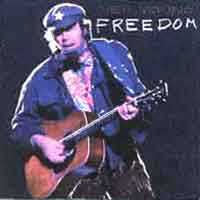 Das
grandiose "Comeback", das Mr. Young nach den müden und
verwirrenden Veröffentlichungen in den 80ern zurück an die
Spitze brachte: "Keep On Rocking in A Free World"!
Das
grandiose "Comeback", das Mr. Young nach den müden und
verwirrenden Veröffentlichungen in den 80ern zurück an die
Spitze brachte: "Keep On Rocking in A Free World"!
 "The
full-blown production made some cry sell out, but Don't Tell a Soul
contained a heightened level of melodicism that produced some wonderful
moments. If Don't Tell a Soul hadn't been a Replacements album, its
appealingly sloppy melodic power-pop would have, more than likely,
earned rave reviews." (John Floyd, All Music Guide)
"The
full-blown production made some cry sell out, but Don't Tell a Soul
contained a heightened level of melodicism that produced some wonderful
moments. If Don't Tell a Soul hadn't been a Replacements album, its
appealingly sloppy melodic power-pop would have, more than likely,
earned rave reviews." (John Floyd, All Music Guide) Mitten in einer Umbruchphase der Band erschien dieses 3. Album, zum
letzten Mal "independent", schwankend zwischen genial und
völlig zerfahren - und auch klanglich kein Genuss. Deutlich kann
man hören, dass die beiden Sänger/Gitarristen/Songschreiber
Evan Dando und Ben Deilly sich nicht stilistisch einigen
konnten. Es gab auch keinen festen Drummer (der Job wurde im Studio
von Dando übernommen, der genauso wie J Mascis von
Mitten in einer Umbruchphase der Band erschien dieses 3. Album, zum
letzten Mal "independent", schwankend zwischen genial und
völlig zerfahren - und auch klanglich kein Genuss. Deutlich kann
man hören, dass die beiden Sänger/Gitarristen/Songschreiber
Evan Dando und Ben Deilly sich nicht stilistisch einigen
konnten. Es gab auch keinen festen Drummer (der Job wurde im Studio
von Dando übernommen, der genauso wie J Mascis von
(2019-10-03)